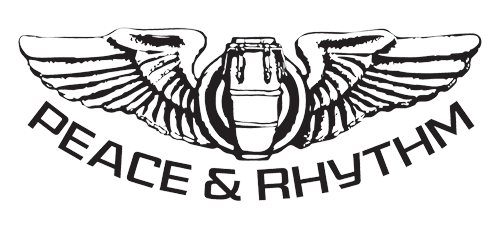News & Updates
Please note: this page is here for archival purposes only and is no longer being updated.
[
{
"id": "desmond-dekker-july-16-1941-may-25-2006",
"data": {
"title": "Desmond Dekker / July 16, 1941 - May 25, 2006",
"slug": "desmond-dekker-july-16-1941-may-25-2006",
"date": "2017-07-16T00:00:00.000Z"
},
"body": "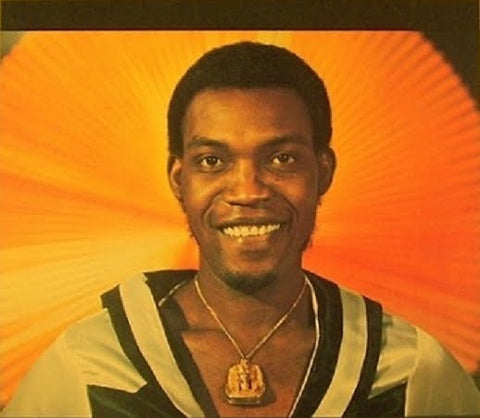\n\nHappy birthday to the **Desmond Dekker** , best known for singing his original compositions \"The Israelites\" and \"007 Shantytown\", among others. In the early '60s he signed to Beverly's Records, recorded some ska singles and became well-known on the island.\n\nIn the late '60s he became popular in the UK with his rocksteady songs commenting on rudeboy culture. \"Israelites\" was a huge world-wide hit in '69 (including being the first charting reggae song in the US). His music was featured in _The Harder They Come_ , but his career sagged a bit in the '70s until the Two-Tone bands helped bring a revival. He recorded for punk label Stiff Records in the '80s. He collaborated with The Rumour, The Specials and Apache Indian and continued touring until his passing. His classic tunes continue to sell to this very day.",
"filePath": "content/posts/desmond-dekker-july-16-1941-may-25-2006.md",
"digest": "73a65a62315d628c",
"rendered": {
"html": "<p><img src=\"/images/desmond_dekker_foto_uu6_large.jpg\" alt=\"\"></p>\n<p>Happy birthday to the <strong>Desmond Dekker</strong> , best known for singing his original compositions “The Israelites” and “007 Shantytown”, among others. In the early ’60s he signed to Beverly’s Records, recorded some ska singles and became well-known on the island.</p>\n<p>In the late ’60s he became popular in the UK with his rocksteady songs commenting on rudeboy culture. “Israelites” was a huge world-wide hit in ‘69 (including being the first charting reggae song in the US). His music was featured in <em>The Harder They Come</em> , but his career sagged a bit in the ’70s until the Two-Tone bands helped bring a revival. He recorded for punk label Stiff Records in the ’80s. He collaborated with The Rumour, The Specials and Apache Indian and continued touring until his passing. His classic tunes continue to sell to this very day.</p>",
"metadata": {
"headings": [],
"localImagePaths": [],
"remoteImagePaths": [],
"frontmatter": {
"web-scraper-order": "1746561867-379",
"web-scraper-start-url": "https://peaceandrhythm.com",
"title": "Desmond Dekker / July 16, 1941 - May 25, 2006",
"pagination": "https://www.peaceandrhythm.com/?page=36",
"date": "July 16, 2017",
"post": "Desmond Dekker / July 16, 1941 - May 25, 2006",
"post-href": "https://www.peaceandrhythm.com/blogs/news/desmond-dekker-july-16-1941-may-25-2006",
"slug": "desmond-dekker-july-16-1941-may-25-2006"
},
"imagePaths": []
}
},
"collection": "blog"
},
{
"id": "born-today-july-15-mega-post",
"data": {
"title": "Born today: July 15 mega-post",
"slug": "born-today-july-15-mega-post",
"date": "2017-07-15T00:00:00.000Z"
},
"body": "There are so many interesting artists born on July 15 that it is impossible in my schedule to write pieces about them. So here are some shorties, along with a video or two for each.\n\n**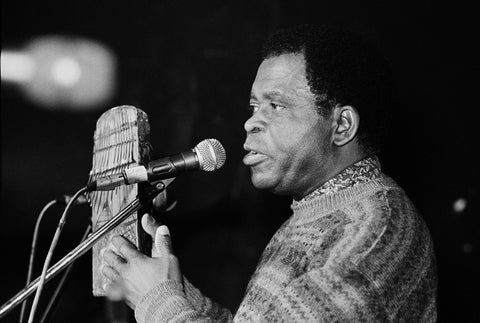**\n\n**\\--Francis Bebey** / July 15, 1929 - May 28, 2001\n\nThis unique Cameroonian composer and his interesting DIY synth-pop crossed with traditional music has been justly making new fans in recent years.\n\n**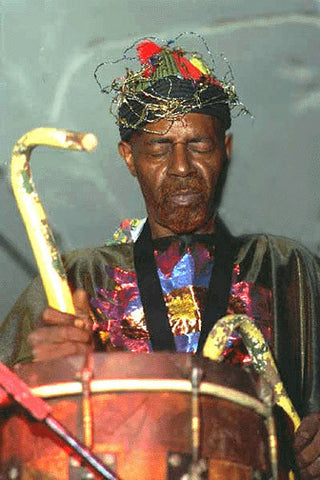**\n\n**\\--James Jacson** / July 15, 1932 - Aug 10, 1997\n\nHappy cosmic birthday to James Jacson, one of my favorite characters from Sun Ra's Arkestra. Jacson is the one who was instructed to build a drum from a tree that Sun Ra said was going to be struck by lightning. After the tree was struck by lightning the next day, Jacson built the \"Infinity Lightning Drum\". Jacson also sang, played flute, bassoon and other percussion instruments and was a vital member of the Arkestra for many years. I got to see him with the Arkestra a few times. He passed away in the Sun Ra house.\n\n**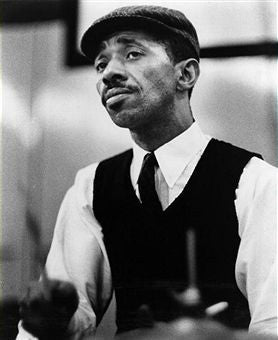**\n\n**\\--Philly Joe Jones** / July 15, 1923 - Aug 30, 1985\n\nHappy birthday to the great bebop drummer Philly Joe Jones, heard often with the likes of Miles Davis, Elmo Hope, Hank Mobley, John Coltrane, Sonny Rollins, Bill Evans and even Archie Shepp.\n\n**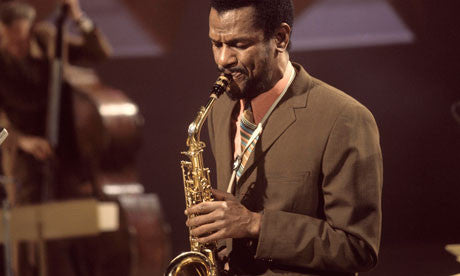**\n\n**\\--Joe Harriott** / July 15, 1928 - Jan 2, 1973\n\nHappy birthday to the great, forward-thinking Jamaican saxophonist Joe Harriott! From mento, calypso and ska and on to bebop, free jazz and Indian-inspired improvisations, he was underrated but full of adventurous ideas. As such, he can rightly be looked at as a pioneer of both free jazz and \"world music\".\n\n**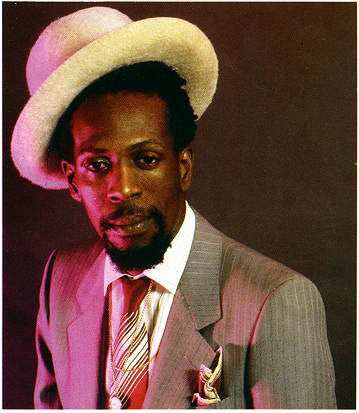**\n\n**\\--Gregory Isaacs** / July 15, 1951 - Oct 25, 2010\n\nIsaacs was one of the greatest and most distinguishable voices of reggae and any other style of music.\n\n**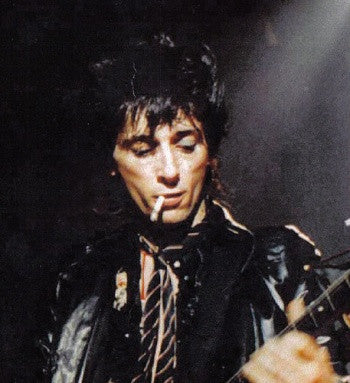**\n\n**\\--Johnny Thunders** / July 15, 1952 - April 23, 1991\n\nJohnny Thunders, one of the godfathers of punk, best known for his work with the NY Dolls and the Heartbreakers.\n\n 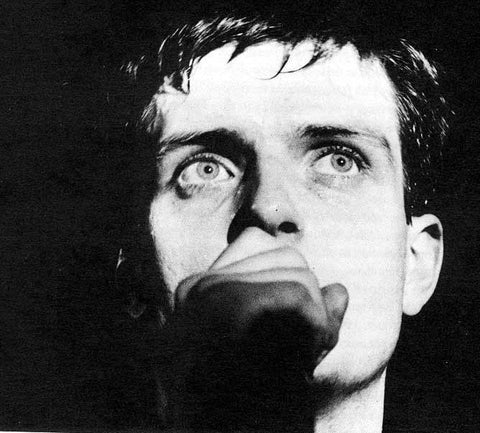\n\n**\\--Ian Curtis** / July 15, 1956 - May 18, 1980\n\nFront man for one of the greatest bands of its era, Joy Division.\n\n**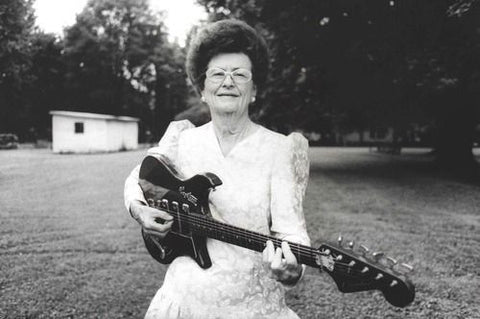**\n\n**\\--Cordell Jackson** / July 15, 1923 - Oct 14, 2004\n\nA pioneer rock & roller, one of the first women to produce her own records, starting Moon Records in 1956 in Memphis (as a diss to Sun Records).\n\n \n\n**\\--Abner Jay** / July 15, 1921 - Nov 4, 1993\n\nThe one-man band Abner Wingate Jay came from the Southern medicine & minstrel show circuit to become a well-known DIY touring agent of \"outsider\" folk music, playing several instruments (some of them home-built), often at the same time. Anthony Braxton once called him \"an American Master\". His bluesy, folky ranting style has a lot of nuttiness in his stories. Aside from his own DIY releases, he also had '60s singles on London and Peacock.",
"filePath": "content/posts/born-today-july-15-mega-post.md",
"digest": "a3345e1b485969dc",
"rendered": {
"html": "<p>There are so many interesting artists born on July 15 that it is impossible in my schedule to write pieces about them. So here are some shorties, along with a video or two for each.</p>\n<p><strong><img src=\"/images/bebey-4_large.jpg\" alt=\"\"></strong></p>\n<p><strong>—Francis Bebey</strong> / July 15, 1929 - May 28, 2001</p>\n<p>This unique Cameroonian composer and his interesting DIY synth-pop crossed with traditional music has been justly making new fans in recent years.</p>\n<p><strong><img src=\"/images/A-263447-1133971890_jpeg_large.jpg\" alt=\"\"></strong></p>\n<p><strong>—James Jacson</strong> / July 15, 1932 - Aug 10, 1997</p>\n<p>Happy cosmic birthday to James Jacson, one of my favorite characters from Sun Ra’s Arkestra. Jacson is the one who was instructed to build a drum from a tree that Sun Ra said was going to be struck by lightning. After the tree was struck by lightning the next day, Jacson built the “Infinity Lightning Drum”. Jacson also sang, played flute, bassoon and other percussion instruments and was a vital member of the Arkestra for many years. I got to see him with the Arkestra a few times. He passed away in the Sun Ra house.</p>\n<p><strong><img src=\"/images/Philly_Joe_Jones_large.jpg\" alt=\"\"></strong></p>\n<p><strong>—Philly Joe Jones</strong> / July 15, 1923 - Aug 30, 1985</p>\n<p>Happy birthday to the great bebop drummer Philly Joe Jones, heard often with the likes of Miles Davis, Elmo Hope, Hank Mobley, John Coltrane, Sonny Rollins, Bill Evans and even Archie Shepp.</p>\n<p><strong><img src=\"/images/Joe-Harriott-007_large.jpg\" alt=\"\"></strong></p>\n<p><strong>—Joe Harriott</strong> / July 15, 1928 - Jan 2, 1973</p>\n<p>Happy birthday to the great, forward-thinking Jamaican saxophonist Joe Harriott! From mento, calypso and ska and on to bebop, free jazz and Indian-inspired improvisations, he was underrated but full of adventurous ideas. As such, he can rightly be looked at as a pioneer of both free jazz and “world music”.</p>\n<p><strong><img src=\"/images/gregory-isaacs_large.jpg\" alt=\"\"></strong></p>\n<p><strong>—Gregory Isaacs</strong> / July 15, 1951 - Oct 25, 2010</p>\n<p>Isaacs was one of the greatest and most distinguishable voices of reggae and any other style of music.</p>\n<p><strong><img src=\"/images/thunders2_large.jpg\" alt=\"\"></strong></p>\n<p><strong>—Johnny Thunders</strong> / July 15, 1952 - April 23, 1991</p>\n<p>Johnny Thunders, one of the godfathers of punk, best known for his work with the NY Dolls and the Heartbreakers.</p>\n<p><img src=\"/images/Ian-Curtis-joy-division-287810_668_603_large.jpg\" alt=\"\"></p>\n<p><strong>—Ian Curtis</strong> / July 15, 1956 - May 18, 1980</p>\n<p>Front man for one of the greatest bands of its era, Joy Division.</p>\n<p><strong><img src=\"/images/b092ffb34d0f1983a9e7a67f3e7fe29c_large.jpg\" alt=\"\"></strong></p>\n<p><strong>—Cordell Jackson</strong> / July 15, 1923 - Oct 14, 2004</p>\n<p>A pioneer rock & roller, one of the first women to produce her own records, starting Moon Records in 1956 in Memphis (as a diss to Sun Records).</p>\n<p><img src=\"/images/Abner-Jay-One-Man-Band-Format_large.jpg\" alt=\"\"></p>\n<p><strong>—Abner Jay</strong> / July 15, 1921 - Nov 4, 1993</p>\n<p>The one-man band Abner Wingate Jay came from the Southern medicine & minstrel show circuit to become a well-known DIY touring agent of “outsider” folk music, playing several instruments (some of them home-built), often at the same time. Anthony Braxton once called him “an American Master”. His bluesy, folky ranting style has a lot of nuttiness in his stories. Aside from his own DIY releases, he also had ’60s singles on London and Peacock.</p>",
"metadata": {
"headings": [],
"localImagePaths": [],
"remoteImagePaths": [],
"frontmatter": {
"web-scraper-order": "1746561862-377",
"web-scraper-start-url": "https://peaceandrhythm.com",
"title": "Born today: July 15 mega-post",
"pagination": "https://www.peaceandrhythm.com/?page=37",
"date": "July 15, 2017",
"post": "Born today: July 15 mega-post",
"post-href": "https://www.peaceandrhythm.com/blogs/news/born-today-july-15-mega-post",
"slug": "born-today-july-15-mega-post"
},
"imagePaths": []
}
},
"collection": "blog"
},
{
"id": "sabu-martinez-july-14-1930-jan-13-1979",
"data": {
"title": "Sabu Martinez / July 14, 1930 - Jan 13, 1979",
"slug": "sabu-martinez-july-14-1930-jan-13-1979",
"date": "2017-07-14T00:00:00.000Z"
},
"body": "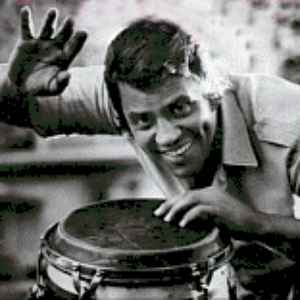\n\nHappy birthday to the great left-handed conguero Louis **\"Sabu\" Martinez** , a star who burned out way too quick, much of it due to heroin addiction. NYC-born, he started playing professionally at the age of 11 after learning rhythm by playing tin cans.\n\nAfter a stint in Puerto Rico he was back in NYC, replacing the Cu-bop OG Chano Pozo in the Dizzy Gillespie orchestra in '48 (he got his \"Sabu\" nickname from Diz) and joining the Benny Goodman band the following year. He worked with Art Blakey off-and-on from 1946-59, appearing on his ground-breaking Afro-percussion records and several Jazz Messengers albums. He cut his own Blue Note date (_Palo Congo_) in '57 and several more albums for a variety of labels. His 1960 _Jazz Espagnole_ album, produced by the great Louie Ramirez, is an absolute bomb classic of Latin-jazz.\n\nAfter another stint in PR, he moved to Sweden in '67, where he opened a percussion academy and played with many of the great European jazz artists, such as the Clarke-Boland big band, Eero Koisvistoinen, Peter Herbolzheimer and Americans Sahib Shihab, George Russell, Art Farmer and others. His funky, awesome _Afro Temple_ album from '73 featured the burning tenor work of the great Bernt Rosengren, and the album was full of humor, protest, funk breaks and nasty tunes.\n\nSabu passed of a gastric ulcer in '79, leaving much material to ultimately be issued. An absolute powerhouse, he played with Charlie Parker, Duke Ellington, Count Basie, Thelonious Monk, Charles Mingus, Harry Belafonte, Max Roach, Horace Silver, JJ Johnson, Arsenio Rodriguez, Tony Bennett, Tito Rodriguez, Miguelito Valdéz, Sammy Davis Jr and many more. His career covered bebop, big band jazz, exotica, broadway, film soundtracks, fusion and funk. He remains a titan of Latin-jazz and Cu-bop.",
"filePath": "content/posts/sabu-martinez-july-14-1930-jan-13-1979.md",
"digest": "03e390b14ebc9c1d",
"rendered": {
"html": "<p><img src=\"/images/74283c80d9ba4e7087fa0591aaa38979_large.png\" alt=\"\"></p>\n<p>Happy birthday to the great left-handed conguero Louis <strong>“Sabu” Martinez</strong> , a star who burned out way too quick, much of it due to heroin addiction. NYC-born, he started playing professionally at the age of 11 after learning rhythm by playing tin cans.</p>\n<p>After a stint in Puerto Rico he was back in NYC, replacing the Cu-bop OG Chano Pozo in the Dizzy Gillespie orchestra in ‘48 (he got his “Sabu” nickname from Diz) and joining the Benny Goodman band the following year. He worked with Art Blakey off-and-on from 1946-59, appearing on his ground-breaking Afro-percussion records and several Jazz Messengers albums. He cut his own Blue Note date (<em>Palo Congo</em>) in ‘57 and several more albums for a variety of labels. His 1960 <em>Jazz Espagnole</em> album, produced by the great Louie Ramirez, is an absolute bomb classic of Latin-jazz.</p>\n<p>After another stint in PR, he moved to Sweden in ‘67, where he opened a percussion academy and played with many of the great European jazz artists, such as the Clarke-Boland big band, Eero Koisvistoinen, Peter Herbolzheimer and Americans Sahib Shihab, George Russell, Art Farmer and others. His funky, awesome <em>Afro Temple</em> album from ‘73 featured the burning tenor work of the great Bernt Rosengren, and the album was full of humor, protest, funk breaks and nasty tunes.</p>\n<p>Sabu passed of a gastric ulcer in ‘79, leaving much material to ultimately be issued. An absolute powerhouse, he played with Charlie Parker, Duke Ellington, Count Basie, Thelonious Monk, Charles Mingus, Harry Belafonte, Max Roach, Horace Silver, JJ Johnson, Arsenio Rodriguez, Tony Bennett, Tito Rodriguez, Miguelito Valdéz, Sammy Davis Jr and many more. His career covered bebop, big band jazz, exotica, broadway, film soundtracks, fusion and funk. He remains a titan of Latin-jazz and Cu-bop.</p>",
"metadata": {
"headings": [],
"localImagePaths": [],
"remoteImagePaths": [],
"frontmatter": {
"web-scraper-order": "1746561859-376",
"web-scraper-start-url": "https://peaceandrhythm.com",
"title": "Sabu Martinez / July 14, 1930 - Jan 13, 1979",
"pagination": "https://www.peaceandrhythm.com/?page=37",
"date": "July 14, 2017",
"post": "Sabu Martinez / July 14, 1930 - Jan 13, 1979",
"post-href": "https://www.peaceandrhythm.com/blogs/news/sabu-martinez-july-14-1930-jan-13-1979",
"slug": "sabu-martinez-july-14-1930-jan-13-1979"
},
"imagePaths": []
}
},
"collection": "blog"
},
{
"id": "albert-ayler-july-13-1936-nov-25-1970",
"data": {
"title": "Albert Ayler / July 13, 1936 - Nov 25, 1970",
"slug": "albert-ayler-july-13-1936-nov-25-1970",
"date": "2017-07-13T00:00:00.000Z"
},
"body": "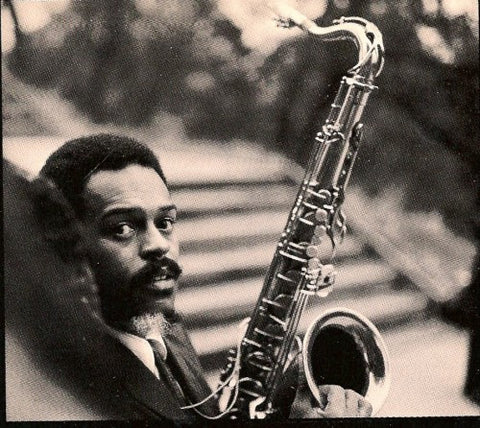\n\nHappy birthday to one of my all time favorites, the radical tenor saxophonist **Albert Ayler** , a man who brought his biting R&B/gospel tone to the intergalactic free jazz world and pushed the music to it's freaky limits.\n\nBorn in that storied freak-music town of Cleveland OH, he was inspired by the church before joining Little Walter's band in '52. A stint in the military found Stanley Turrentine and Beaver Harris as jam partners. He moved to Sweden in '62 and started making albums, as well as a brief stint with Cecil Taylor.\n\nIn '64 he found himself in NYC and hooked up with the soon-to-be legendary ESP-Disk, making albums of uncompromising vision and fierce free jazz attack that became immediately (and forever) controversial. With Sunny Murray on the drum kit, this unit destroyed jazz convention while still retaining an ancient-to-the-future concept that called New Orleans marching bands to mind. With musical partners such as Murray, Don Cherry, John Tchicai, Milford Graves and his brother Don Ayler, Albert proceeded to slay all in his sight with his attack over the course of several albums with ESP and Impulse! (John Coltrane was a champion of his music and Ayler sometimes joined his group).\n\nHis tour of Europe in '66 brought a violinist (Michel Sampson) into the fold and the next year he played [an emotional set](https://www.youtube.com/watch?v=wO9UCV5APPA) at Trane's funeral. A bizarre turn into pop/gospel/R&B and the influence of his girlfriend Mary Maria attempted to popularize his sound. After a brief return to free jazz he committed suicide in 1970, although rumors of foul play persist to this day.",
"filePath": "content/posts/albert-ayler-july-13-1936-nov-25-1970.md",
"digest": "47493a49dbc1a0b5",
"rendered": {
"html": "<p><img src=\"/images/Ayler-e1436789852163_large.jpg\" alt=\"\"></p>\n<p>Happy birthday to one of my all time favorites, the radical tenor saxophonist <strong>Albert Ayler</strong> , a man who brought his biting R&B/gospel tone to the intergalactic free jazz world and pushed the music to it’s freaky limits.</p>\n<p>Born in that storied freak-music town of Cleveland OH, he was inspired by the church before joining Little Walter’s band in ‘52. A stint in the military found Stanley Turrentine and Beaver Harris as jam partners. He moved to Sweden in ‘62 and started making albums, as well as a brief stint with Cecil Taylor.</p>\n<p>In ‘64 he found himself in NYC and hooked up with the soon-to-be legendary ESP-Disk, making albums of uncompromising vision and fierce free jazz attack that became immediately (and forever) controversial. With Sunny Murray on the drum kit, this unit destroyed jazz convention while still retaining an ancient-to-the-future concept that called New Orleans marching bands to mind. With musical partners such as Murray, Don Cherry, John Tchicai, Milford Graves and his brother Don Ayler, Albert proceeded to slay all in his sight with his attack over the course of several albums with ESP and Impulse! (John Coltrane was a champion of his music and Ayler sometimes joined his group).</p>\n<p>His tour of Europe in ‘66 brought a violinist (Michel Sampson) into the fold and the next year he played <a href=\"https://www.youtube.com/watch?v=wO9UCV5APPA\">an emotional set</a> at Trane’s funeral. A bizarre turn into pop/gospel/R&B and the influence of his girlfriend Mary Maria attempted to popularize his sound. After a brief return to free jazz he committed suicide in 1970, although rumors of foul play persist to this day.</p>",
"metadata": {
"headings": [],
"localImagePaths": [],
"remoteImagePaths": [],
"frontmatter": {
"web-scraper-order": "1746561857-375",
"web-scraper-start-url": "https://peaceandrhythm.com",
"title": "Albert Ayler / July 13, 1936 - Nov 25, 1970",
"pagination": "https://www.peaceandrhythm.com/?page=37",
"date": "July 13, 2017",
"post": "Albert Ayler / July 13, 1936 - Nov 25, 1970",
"post-href": "https://www.peaceandrhythm.com/blogs/news/albert-ayler-july-13-1936-nov-25-1970",
"slug": "albert-ayler-july-13-1936-nov-25-1970"
},
"imagePaths": []
}
},
"collection": "blog"
},
{
"id": "big-john-patton-july-12-1935-march-19-2002",
"data": {
"title": "Big John Patton / July 12, 1935 - March 19, 2002",
"slug": "big-john-patton-july-12-1935-march-19-2002",
"date": "2017-07-12T00:00:00.000Z"
},
"body": "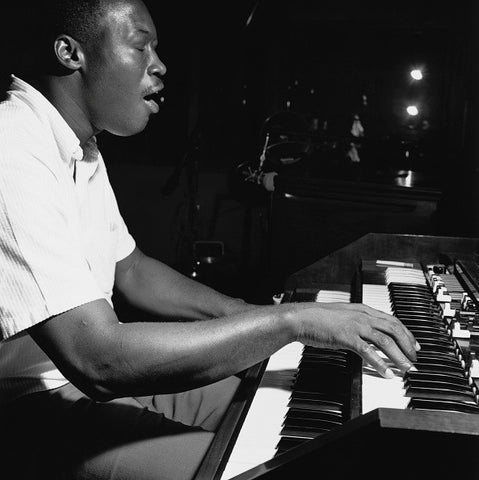\n\nHere's a birthday nod to the Hammond B-3 groovemaster **John Patton** , a key member of the '60s soul-jazz scene following Jimmy Smith. He said his approach was trying to emulate the style of trumpeters and trombonists on the organ. Out of Kansas City, he was pianist and bandleader with Lloyd Price in the mid to late '50s. After leaving Price in '59 he moved to NYC and started gigging with the Hammond, playing groovy hard bop with the likes of Ike Quebec, Lou Donaldson, Johnny Griffin and Grant Green.\n\nHe signed to Blue Note and released several records for the label as a leader, as well as a sideman with Donaldson, Harold Vick, George Braith and others. His 1969/70 band featured a young James \"Blood\" Ulmer! He moonlighted for other labels as well, appearing as \"Malcolm Bass\" with Art Blakey and others.\n\nHe laid low during the '70s but re-emerged in the '80s with Jimmy Ponder, avant-gardist John Zorn and also made some trips to Europe and Japan in response to the acid jazz scene's interest in his music, with several reissues and unreleased sessions seeing the light of day. In later years he teamed with Melvin Sparks and Grachan Moncur III, as well as Black Star, before his death from diabetes.",
"filePath": "content/posts/big-john-patton-july-12-1935-march-19-2002.md",
"digest": "4c2d82a371168319",
"rendered": {
"html": "<p><img src=\"/images/jazz-organist-big-john-patton-during-the-recording-session-for-don-picture-id526761666_large.jpg\" alt=\"\"></p>\n<p>Here’s a birthday nod to the Hammond B-3 groovemaster <strong>John Patton</strong> , a key member of the ’60s soul-jazz scene following Jimmy Smith. He said his approach was trying to emulate the style of trumpeters and trombonists on the organ. Out of Kansas City, he was pianist and bandleader with Lloyd Price in the mid to late ’50s. After leaving Price in ‘59 he moved to NYC and started gigging with the Hammond, playing groovy hard bop with the likes of Ike Quebec, Lou Donaldson, Johnny Griffin and Grant Green.</p>\n<p>He signed to Blue Note and released several records for the label as a leader, as well as a sideman with Donaldson, Harold Vick, George Braith and others. His 1969/70 band featured a young James “Blood” Ulmer! He moonlighted for other labels as well, appearing as “Malcolm Bass” with Art Blakey and others.</p>\n<p>He laid low during the ’70s but re-emerged in the ’80s with Jimmy Ponder, avant-gardist John Zorn and also made some trips to Europe and Japan in response to the acid jazz scene’s interest in his music, with several reissues and unreleased sessions seeing the light of day. In later years he teamed with Melvin Sparks and Grachan Moncur III, as well as Black Star, before his death from diabetes.</p>",
"metadata": {
"headings": [],
"localImagePaths": [],
"remoteImagePaths": [],
"frontmatter": {
"web-scraper-order": "1746561855-374",
"web-scraper-start-url": "https://peaceandrhythm.com",
"title": "Big John Patton / July 12, 1935 - March 19, 2002",
"pagination": "https://www.peaceandrhythm.com/?page=37",
"date": "July 12, 2017",
"post": "Big John Patton / July 12, 1935 - March 19, 2002",
"post-href": "https://www.peaceandrhythm.com/blogs/news/big-john-patton-july-12-1935-march-19-2002",
"slug": "big-john-patton-july-12-1935-march-19-2002"
},
"imagePaths": []
}
},
"collection": "blog"
},
{
"id": "john-holt-july-11-1947-oct-19-2014",
"data": {
"title": "John Holt / July 11, 1947 - Oct 19, 2014",
"slug": "john-holt-july-11-1947-oct-19-2014",
"date": "2017-07-11T00:00:00.000Z"
},
"body": "**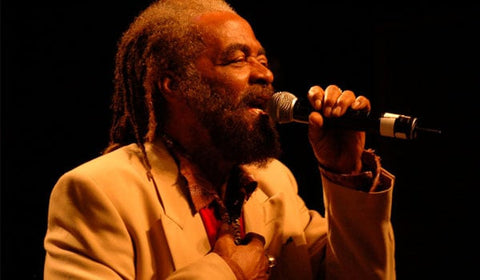**\n\n**John Holt** was a successful Jamaican singer from the rocksteady years thru to pop-reggae, lover's rock/ballads and into the dancehall era along with contributions to some house music productions. Kingston-born, he got his start as a teenager, winning local talent contests before recording sides with Lesley Kong and \"Rum Bumper\", a duet with Alton Ellis, for Randy Chin.\n\nHe joined The Paragons, one of the great groups of the rocksteady era, releasing several singles for Studio 1 and Treasure Isle, including the original versions of \"The Tide Is High\" and \"Wear You To The Ball\" (a tune U-Roy had a big hit with, after Holt's introducing U-Roy to Duke Reid). After the Paragons break-up he recorded as a solo for several producers, including Bunny Lee, Prince Buster, Harry Mudie, Phil Pratt, Coxone Dodd, Reid and more.\n\nHis work dipped into the pop realm, with covers of Billy Joel, Kris Kristofferson, Isley Brothers, Slade and the likes, with orchestral strings (_Time Is The Master_) or unabashedly pop moves. In the '80s he cut the slamming \"Police In Helicopter\", among others, for Junjo Lawes. While he had success covering the songs of others, he wrote a lot of his own material and boldly tried many different styles of music. And of course there's [this](https://www.youtube.com/watch?v=S71_vIMQ0YY).",
"filePath": "content/posts/john-holt-july-11-1947-oct-19-2014.md",
"digest": "44ad772debed8fc7",
"rendered": {
"html": "<p><strong><img src=\"/images/news-1014-johnholt_large.jpg\" alt=\"\"></strong></p>\n<p><strong>John Holt</strong> was a successful Jamaican singer from the rocksteady years thru to pop-reggae, lover’s rock/ballads and into the dancehall era along with contributions to some house music productions. Kingston-born, he got his start as a teenager, winning local talent contests before recording sides with Lesley Kong and “Rum Bumper”, a duet with Alton Ellis, for Randy Chin.</p>\n<p>He joined The Paragons, one of the great groups of the rocksteady era, releasing several singles for Studio 1 and Treasure Isle, including the original versions of “The Tide Is High” and “Wear You To The Ball” (a tune U-Roy had a big hit with, after Holt’s introducing U-Roy to Duke Reid). After the Paragons break-up he recorded as a solo for several producers, including Bunny Lee, Prince Buster, Harry Mudie, Phil Pratt, Coxone Dodd, Reid and more.</p>\n<p>His work dipped into the pop realm, with covers of Billy Joel, Kris Kristofferson, Isley Brothers, Slade and the likes, with orchestral strings (<em>Time Is The Master</em>) or unabashedly pop moves. In the ’80s he cut the slamming “Police In Helicopter”, among others, for Junjo Lawes. While he had success covering the songs of others, he wrote a lot of his own material and boldly tried many different styles of music. And of course there’s <a href=\"https://www.youtube.com/watch?v=S71_vIMQ0YY\">this</a>.</p>",
"metadata": {
"headings": [],
"localImagePaths": [],
"remoteImagePaths": [],
"frontmatter": {
"web-scraper-order": "1746561852-373",
"web-scraper-start-url": "https://peaceandrhythm.com",
"title": "John Holt / July 11, 1947 - Oct 19, 2014",
"pagination": "https://www.peaceandrhythm.com/?page=38",
"date": "July 11, 2017",
"post": "John Holt / July 11, 1947 - Oct 19, 2014",
"post-href": "https://www.peaceandrhythm.com/blogs/news/john-holt-july-11-1947-oct-19-2014",
"slug": "john-holt-july-11-1947-oct-19-2014"
},
"imagePaths": []
}
},
"collection": "blog"
},
{
"id": "fulaso-the-rumba-is-here-la-rumba-que-tumba",
"data": {
"title": "FULASO The rumba is here. La rumba que tumba.",
"slug": "fulaso-the-rumba-is-here-la-rumba-que-tumba",
"date": "2017-07-10T00:00:00.000Z"
},
"body": "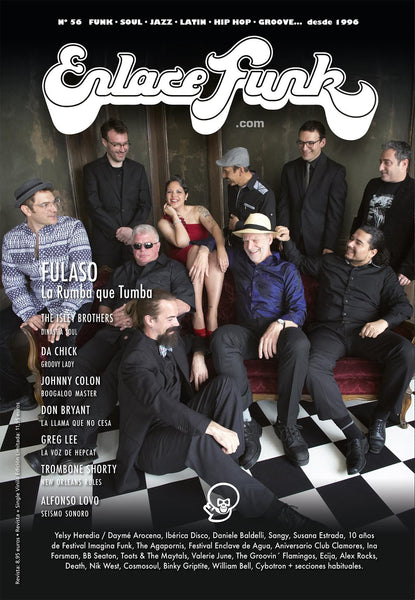\n\n“New York is a great place for Latin music today.\" — Erica Ramos\n\nEnlace Funk No. 56, 2017\n\nFor some time now it seems that the new Latin sounds coming out of NYC have been in good health. The ‘Latin Resistance’ – made of sounds that were born in the city of New York – continues to occupy its share within the larger urban underground scene of genuine and authentic music made in the USA, offering quality surprises with bands and songs that deserve more exposure and success. At the head of the Latin Soul scene and the new boogaloo movement is Fulaso, the 10 piece band led by front woman Erica Ramos. Fulaso certainly plays its share of bugalú (based on the cha-cha-cha rhythm and its ancestor, the Cuban _guajira son_ , but played with a funky soul backbeat), but the band also keeps the Latin Caribbean traditions alive with the essence of authentic rhythms, those that drink from the _guaguancó_ and the _mambo_. Their recent 7” limited edition single was co-released by Peace & Rhythm and Enlace Funk and has already become a classic of parties where DJs such as DJ Turmix or DJ Bongohead revitalize Big Apple nights with Latin soul. From NYC to the world!\n\nInterview: Pablo Yglesias aka DJ Bongohead and Miguel A. Sutil, editor-in-chief of Enlace Funk magazine. Translated by Pablo E. Yglesias.\n\n**Does your ethnic background and where you were brought up influence your music and how you make it?**\n\nOur backgrounds dramatically affect our music and how we make it. Fulaso is a collective and we write as such. Our band members hail from all over the world and many of them have extensive training in numerous styles of Latin, Afro-Cuban, jazz, classical, you name it. So, when we write, all of our influences come into play and you can hear it in Juan’s jazzy chords influenced by his studies of jazz piano, Charly’s Cuban timbale patterns ingrained from his Cuban father and their nights in salsa clubs in the ‘80s, and Pat’s veteran super-abilities to construct horn _moñas_ in record time via his incredible presence in the NYC Latin scene. It’s kind of miraculous the way it all comes together.\n\n**In your performances you have a lot of stage presence and you like to relate to the audience. There is a certain component of theatricality and narration. Can you talk a little bit about why that might be?**\n\nThank you! I was a Theatre Arts major [in college] and have been performing almost all of my life. I actually moved to NYC in 2004 with a directing internship at a theatre company in the West Village. I did theatre of a couple of years, was looking for jobs in _playbill.com_ and saw an ad for a Latin jazz vocalist. I had been really immersed in theatre and thought this would be a fun change so I auditioned for David Fletcher, CEO of New York’s Best Musicians and of Washington’s Best Musicians. He hired me for a trio, recommended me for a few other auditions and BOOM! – I’m answering interview questions for a new 45! Crazy!\n\nI think my ability to connect with the audience comes from stage training. Especially in the vain world we occupy today, you really do have to learn how to let go of your conscious self and be completely open and present. It is in that moment of utter vulnerability do you allow the audience to step into your world and join you in being totally raw and emotionally available. That is when the fun begins.\n\n**How was the group formed and where do your influences come from?**\n\nFulaso is actually an off-shoot of another project a few of us worked in together, Spanglish Fly. For different reasons, quite a few of us decided to begin our own project. We recruited some great new faces to fill in the gaps and we fortunately have really great energy together and are a solid team. In fact, we just recruited two great new percussionists who we are very excited to have on join us: Dawn Drake on congas and Jhan-Carlo Lamprea Rodríguez on bongó.\n\n**Tell us a bit about the other members of the band that you collaborate with on song composition.**\n\nFor readers who want to know even more about us, you can always check out our band bio’s at www.fulaso.com/section/bandbios\n\nFulaso is a special project because the band belongs to each of us, so we each have jobs, i.e. I do the booking, Mario (bass) is our Marketing and PR Manager, Jonathan (baritone sax) is our Librarian, physically and virtually managing all of the charts and books, etc. We vote on everything from logo colors to gig opportunities. It’s a lot of work, but everyone is very dedicated, works hard and in that light, its a very special project. There is a lot of love.\n\n**Do you think NYC is a good place today for Latin music? Why?**\n\nI personally think New York is a great place for Latin music today and I think many of my bandmates would agree with me. Primarily, the Latin music community today, in my experience, is so communal. Without labels buying the way they were in the ‘60s/‘70s/‘80s, I would imagine due to the fact that music is so easily accessible via the Internet, the competition has completely changed. We all need each other now for work, fan sharing, show sharing, and even booking data exchange. Everyone plays with everyone, subs for each other, gets each other gigs and recommendations. It is really a beautiful thing. In the humbling times I have spent talking to guys like Harvey Averne and Joe Bataan, the NY Latin music community in the ‘60s and ‘70s was cut throat and bands did not like each other. This is one thing that I think really sets the scene apart today.\n\nThe other component is the type of Latin music currently emerging from the city is so dynamic and experimental. Bands like Mariachi Flor de Tolache, Williamsburg Salsa Orchestra, and Avenida B are rejuvenating old sounds, Dawn Drake and ZapOte, Karikatura, San Simon and Yotoco spanning genres while maintaining a strong Latin edge, while guys like Eddie Palmieri and Joe Bataan STILL pack houses. Latin music in NYC is HOT right now!\n\n**What are your favorite DJs and clubs?**\n\nObviously, DJ Turmix, DJ Bongohead, DJ Andujar, and my girl DJ Terry Dactyl! We’ve received a ton of love from some of the best local radio DJs like the immeasurable Vicki Sola of Que Viva La Musica on WFDU, and the gallant gentleman German Santana and Louis Leffite of Caribe Latino on WKCR. Also, as corny as this may be, my most favorite DJ is actually my husband. His record collection is expansive and he always keeps our house grooving from opera and classics to drum & bass to jazz, soul, roots, rock, hip-hop, death metal, you name it. He keeps me updated and educated even when it annoys the crap out of me and I am so very grateful. Clubs, now that’s a more difficult answer. It really depends on the night and my mood, which usually includes something with dancing! My favorite places to play in the city are Brooklyn Bowl (in Williamsburg, Brooklyn) and Barbès (in Park Slope, Brooklyn).\n\n**For some time now there has been a reassertion of the original boogaloo sound. Do you think there really is a revival of that sound and an authentic interest to recover it or is it just a fad?**\n\nI absolutely think the Latin boogaloo sound is seeing an authentic resurgence. Just as the tide, things come and slip away. Music has changed so much as it can be made electronically now and it’s way cheaper to pay one DJ, than hire a band of people. The NYC Latin music scene is fighting to keep live music and musicians working and relevant. The resurgence of Latin soul and bugalú, in my opinion is huge part of that because of its special nest in time. It is a reminder of that ‘60s and ‘70s era when people were liberating themselves. I think there is a powerful message there and people really feel that right now.\n\n**How is boogaloo being made today? In the original early days, it integrated many people of races and places, do you think that is still so?**\n\nI can only speak to my own experience and to Fulaso. We strive to make Funky Latin Soul and Boogaloo, whatever that means to you. In our world, our music is absolutely being integrated by our upbringings from so many corners of the world and our trainings from all different schools of specialty and technique. From all of the people we have had the pleasure to work with in our other projects or who have subbed for us, it is the same. Live music in the NYC melting pot is being made just so; a big mish-mash of the entire world.\n\n**Do you think that your music is just for dancing or has a social component as well?**\n\nThe only social component of Fulaso's music is BE SOCIAL! Turn off the TV, leave the phone and be present! Get out there, move your ass and do not worry about anything in the world, because we only have right here and now, so let’s enjoy this moment together!\n\n**What do you think of the new American president and his policies?**\n\nOH! I have SO much to say and I do it by calling, faxing, texting, and emailing my representatives, staying updated, educated, and supporting causes like the ACLU, etc. I personally do not nor have I ever supported that man, his administration or his policies.\n\n**What inspires you to compose songs?**\n\nFor me, personally, moments and other music. You have a lot of interactions in NYC, a lot of special moments with strangers and that often inspires me. I’m also inspired by other music I hear. Fulaso is generally inspired by an idea that a band member brings in. For example, “Bodega Cat,” written by Jonathan Flothow, was brought in and built upon. The swing sections, specifically, were the brain-child of Matt Thomas.\n\n**When I saw you live in NYC, you played some cover tunes. What are your favorite artists and which artists do you cover?**\n\nMy favorite artists list could go on forever. Vocalists who have really inspired me or who I have studied would definitely be the obvious jazz greats; Nina, Ella, Billie, Etta. Esperanza Spalding and Regina Spektor are some more current artists who have inspired me. And obviously Beyoncé. She IS the Queen Bee, no doubt!\n\nThe covers Fulaso chooses are based on sound. We currently cover Fania All Stars, Alfredo Linares, Frank Cotto, Ray Barretto and Pete Rodriguez with some special arrangements of Nina Simone, Eddie Palmieri, Clarence Reid, Donna Summer and The Kills.\n\n**Have you ever played in Europe? What do you expect from the European public and what would you tell your fans in Europe?**\n\nFulaso has yet to play in Europe, but hopefully in the next year or two! I don’t hold expectations. Each crowd is a different experience, though I’ve heard stories of great European audiences from colleagues!\n\nTo our fans, THANK YOU SOOOO MUCH for reading and listening! We appreciate your love so much! Please visit our Facebook page and “Like” us because you have no idea how much those Like demographics will help us get gigs in EU! You can also check us out at _www.fulaso.com_ to hear music, see videos, even purchase a signature pair of 'Sucio Soul' panties and much more! Love and Peace, dear friends!\n\nAlso, a very special thank you to Pablo, Andujar and Miguel for listening to and supporting us. We just can’t tell you how much it means!\n\n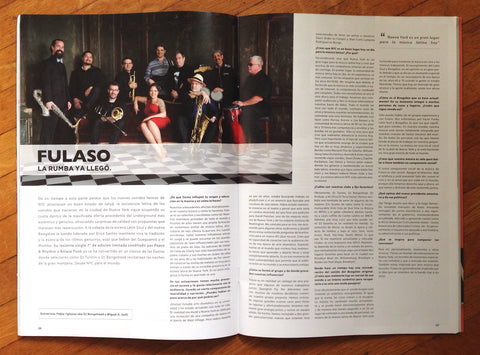",
"filePath": "content/posts/fulaso-the-rumba-is-here-la-rumba-que-tumba.md",
"digest": "01267ed28b8bd7c4",
"rendered": {
"html": "<p><img src=\"/images/35492257306_4286c4089d_o_grande.jpg\" alt=\"\"></p>\n<p>“New York is a great place for Latin music today.” — Erica Ramos</p>\n<p>Enlace Funk No. 56, 2017</p>\n<p>For some time now it seems that the new Latin sounds coming out of NYC have been in good health. The ‘Latin Resistance’ – made of sounds that were born in the city of New York – continues to occupy its share within the larger urban underground scene of genuine and authentic music made in the USA, offering quality surprises with bands and songs that deserve more exposure and success. At the head of the Latin Soul scene and the new boogaloo movement is Fulaso, the 10 piece band led by front woman Erica Ramos. Fulaso certainly plays its share of bugalú (based on the cha-cha-cha rhythm and its ancestor, the Cuban <em>guajira son</em> , but played with a funky soul backbeat), but the band also keeps the Latin Caribbean traditions alive with the essence of authentic rhythms, those that drink from the <em>guaguancó</em> and the <em>mambo</em>. Their recent 7” limited edition single was co-released by Peace & Rhythm and Enlace Funk and has already become a classic of parties where DJs such as DJ Turmix or DJ Bongohead revitalize Big Apple nights with Latin soul. From NYC to the world!</p>\n<p>Interview: Pablo Yglesias aka DJ Bongohead and Miguel A. Sutil, editor-in-chief of Enlace Funk magazine. Translated by Pablo E. Yglesias.</p>\n<p><strong>Does your ethnic background and where you were brought up influence your music and how you make it?</strong></p>\n<p>Our backgrounds dramatically affect our music and how we make it. Fulaso is a collective and we write as such. Our band members hail from all over the world and many of them have extensive training in numerous styles of Latin, Afro-Cuban, jazz, classical, you name it. So, when we write, all of our influences come into play and you can hear it in Juan’s jazzy chords influenced by his studies of jazz piano, Charly’s Cuban timbale patterns ingrained from his Cuban father and their nights in salsa clubs in the ‘80s, and Pat’s veteran super-abilities to construct horn <em>moñas</em> in record time via his incredible presence in the NYC Latin scene. It’s kind of miraculous the way it all comes together.</p>\n<p><strong>In your performances you have a lot of stage presence and you like to relate to the audience. There is a certain component of theatricality and narration. Can you talk a little bit about why that might be?</strong></p>\n<p>Thank you! I was a Theatre Arts major [in college] and have been performing almost all of my life. I actually moved to NYC in 2004 with a directing internship at a theatre company in the West Village. I did theatre of a couple of years, was looking for jobs in <em>playbill.com</em> and saw an ad for a Latin jazz vocalist. I had been really immersed in theatre and thought this would be a fun change so I auditioned for David Fletcher, CEO of New York’s Best Musicians and of Washington’s Best Musicians. He hired me for a trio, recommended me for a few other auditions and BOOM! – I’m answering interview questions for a new 45! Crazy!</p>\n<p>I think my ability to connect with the audience comes from stage training. Especially in the vain world we occupy today, you really do have to learn how to let go of your conscious self and be completely open and present. It is in that moment of utter vulnerability do you allow the audience to step into your world and join you in being totally raw and emotionally available. That is when the fun begins.</p>\n<p><strong>How was the group formed and where do your influences come from?</strong></p>\n<p>Fulaso is actually an off-shoot of another project a few of us worked in together, Spanglish Fly. For different reasons, quite a few of us decided to begin our own project. We recruited some great new faces to fill in the gaps and we fortunately have really great energy together and are a solid team. In fact, we just recruited two great new percussionists who we are very excited to have on join us: Dawn Drake on congas and Jhan-Carlo Lamprea Rodríguez on bongó.</p>\n<p><strong>Tell us a bit about the other members of the band that you collaborate with on song composition.</strong></p>\n<p>For readers who want to know even more about us, you can always check out our band bio’s at <a href=\"http://www.fulaso.com/section/bandbios\">www.fulaso.com/section/bandbios</a></p>\n<p>Fulaso is a special project because the band belongs to each of us, so we each have jobs, i.e. I do the booking, Mario (bass) is our Marketing and PR Manager, Jonathan (baritone sax) is our Librarian, physically and virtually managing all of the charts and books, etc. We vote on everything from logo colors to gig opportunities. It’s a lot of work, but everyone is very dedicated, works hard and in that light, its a very special project. There is a lot of love.</p>\n<p><strong>Do you think NYC is a good place today for Latin music? Why?</strong></p>\n<p>I personally think New York is a great place for Latin music today and I think many of my bandmates would agree with me. Primarily, the Latin music community today, in my experience, is so communal. Without labels buying the way they were in the ‘60s/‘70s/‘80s, I would imagine due to the fact that music is so easily accessible via the Internet, the competition has completely changed. We all need each other now for work, fan sharing, show sharing, and even booking data exchange. Everyone plays with everyone, subs for each other, gets each other gigs and recommendations. It is really a beautiful thing. In the humbling times I have spent talking to guys like Harvey Averne and Joe Bataan, the NY Latin music community in the ‘60s and ‘70s was cut throat and bands did not like each other. This is one thing that I think really sets the scene apart today.</p>\n<p>The other component is the type of Latin music currently emerging from the city is so dynamic and experimental. Bands like Mariachi Flor de Tolache, Williamsburg Salsa Orchestra, and Avenida B are rejuvenating old sounds, Dawn Drake and ZapOte, Karikatura, San Simon and Yotoco spanning genres while maintaining a strong Latin edge, while guys like Eddie Palmieri and Joe Bataan STILL pack houses. Latin music in NYC is HOT right now!</p>\n<p><strong>What are your favorite DJs and clubs?</strong></p>\n<p>Obviously, DJ Turmix, DJ Bongohead, DJ Andujar, and my girl DJ Terry Dactyl! We’ve received a ton of love from some of the best local radio DJs like the immeasurable Vicki Sola of Que Viva La Musica on WFDU, and the gallant gentleman German Santana and Louis Leffite of Caribe Latino on WKCR. Also, as corny as this may be, my most favorite DJ is actually my husband. His record collection is expansive and he always keeps our house grooving from opera and classics to drum & bass to jazz, soul, roots, rock, hip-hop, death metal, you name it. He keeps me updated and educated even when it annoys the crap out of me and I am so very grateful. Clubs, now that’s a more difficult answer. It really depends on the night and my mood, which usually includes something with dancing! My favorite places to play in the city are Brooklyn Bowl (in Williamsburg, Brooklyn) and Barbès (in Park Slope, Brooklyn).</p>\n<p><strong>For some time now there has been a reassertion of the original boogaloo sound. Do you think there really is a revival of that sound and an authentic interest to recover it or is it just a fad?</strong></p>\n<p>I absolutely think the Latin boogaloo sound is seeing an authentic resurgence. Just as the tide, things come and slip away. Music has changed so much as it can be made electronically now and it’s way cheaper to pay one DJ, than hire a band of people. The NYC Latin music scene is fighting to keep live music and musicians working and relevant. The resurgence of Latin soul and bugalú, in my opinion is huge part of that because of its special nest in time. It is a reminder of that ‘60s and ‘70s era when people were liberating themselves. I think there is a powerful message there and people really feel that right now.</p>\n<p><strong>How is boogaloo being made today? In the original early days, it integrated many people of races and places, do you think that is still so?</strong></p>\n<p>I can only speak to my own experience and to Fulaso. We strive to make Funky Latin Soul and Boogaloo, whatever that means to you. In our world, our music is absolutely being integrated by our upbringings from so many corners of the world and our trainings from all different schools of specialty and technique. From all of the people we have had the pleasure to work with in our other projects or who have subbed for us, it is the same. Live music in the NYC melting pot is being made just so; a big mish-mash of the entire world.</p>\n<p><strong>Do you think that your music is just for dancing or has a social component as well?</strong></p>\n<p>The only social component of Fulaso’s music is BE SOCIAL! Turn off the TV, leave the phone and be present! Get out there, move your ass and do not worry about anything in the world, because we only have right here and now, so let’s enjoy this moment together!</p>\n<p><strong>What do you think of the new American president and his policies?</strong></p>\n<p>OH! I have SO much to say and I do it by calling, faxing, texting, and emailing my representatives, staying updated, educated, and supporting causes like the ACLU, etc. I personally do not nor have I ever supported that man, his administration or his policies.</p>\n<p><strong>What inspires you to compose songs?</strong></p>\n<p>For me, personally, moments and other music. You have a lot of interactions in NYC, a lot of special moments with strangers and that often inspires me. I’m also inspired by other music I hear. Fulaso is generally inspired by an idea that a band member brings in. For example, “Bodega Cat,” written by Jonathan Flothow, was brought in and built upon. The swing sections, specifically, were the brain-child of Matt Thomas.</p>\n<p><strong>When I saw you live in NYC, you played some cover tunes. What are your favorite artists and which artists do you cover?</strong></p>\n<p>My favorite artists list could go on forever. Vocalists who have really inspired me or who I have studied would definitely be the obvious jazz greats; Nina, Ella, Billie, Etta. Esperanza Spalding and Regina Spektor are some more current artists who have inspired me. And obviously Beyoncé. She IS the Queen Bee, no doubt!</p>\n<p>The covers Fulaso chooses are based on sound. We currently cover Fania All Stars, Alfredo Linares, Frank Cotto, Ray Barretto and Pete Rodriguez with some special arrangements of Nina Simone, Eddie Palmieri, Clarence Reid, Donna Summer and The Kills.</p>\n<p><strong>Have you ever played in Europe? What do you expect from the European public and what would you tell your fans in Europe?</strong></p>\n<p>Fulaso has yet to play in Europe, but hopefully in the next year or two! I don’t hold expectations. Each crowd is a different experience, though I’ve heard stories of great European audiences from colleagues!</p>\n<p>To our fans, THANK YOU SOOOO MUCH for reading and listening! We appreciate your love so much! Please visit our Facebook page and “Like” us because you have no idea how much those Like demographics will help us get gigs in EU! You can also check us out at <em><a href=\"http://www.fulaso.com\">www.fulaso.com</a></em> to hear music, see videos, even purchase a signature pair of ‘Sucio Soul’ panties and much more! Love and Peace, dear friends!</p>\n<p>Also, a very special thank you to Pablo, Andujar and Miguel for listening to and supporting us. We just can’t tell you how much it means!</p>\n<p><img src=\"/images/Fulaso_Magazine_Spread_large.jpg\" alt=\"\"></p>",
"metadata": {
"headings": [],
"localImagePaths": [],
"remoteImagePaths": [],
"frontmatter": {
"web-scraper-order": "1746561850-372",
"web-scraper-start-url": "https://peaceandrhythm.com",
"title": "FULASO The rumba is here. La rumba que tumba.",
"pagination": "https://www.peaceandrhythm.com/?page=38",
"date": "July 10, 2017",
"post": "FULASO The rumba is here. La rumba que tumba.",
"post-href": "https://www.peaceandrhythm.com/blogs/news/fulaso-the-rumba-is-here-la-rumba-que-tumba",
"slug": "fulaso-the-rumba-is-here-la-rumba-que-tumba"
},
"imagePaths": []
}
},
"collection": "blog"
},
{
"id": "lee-morgan-july-10-1938-feb-19-1972",
"data": {
"title": "Lee Morgan / July 10, 1938 - Feb 19, 1972",
"slug": "lee-morgan-july-10-1938-feb-19-1972",
"date": "2017-07-10T00:00:00.000Z"
},
"body": "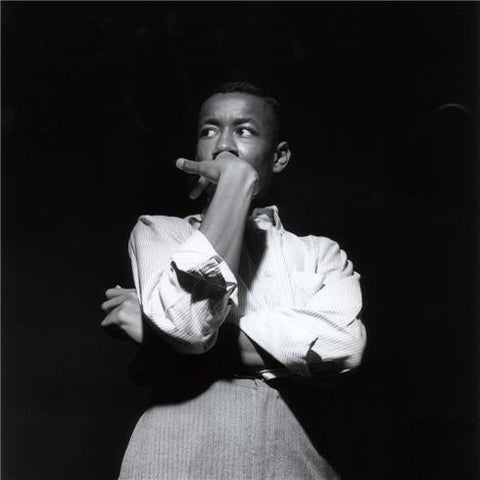\n\nOne of the leading lights of the hard bop era, trumpeter **Lee Morgan** broke onto the scene as a teen prodigy, playing with John Coltrane, Dizzy Gillespie, Hank Mobley and Art Blakey in the mid-to-late '50s. His driving style and clear, bold tone contributed all over the hard bop landscape, from funky to bluesy, and from more adventurous modal stuff to delicate standards. Throughout his short but steadily working career he played with Wayne Shorter, Elvin Jones, Charlie Persip, Grachan Moncur III, Andrew Hill, Benny Golson, Jackie McLean, Larry Young, Curtis Fuller, Jimmy Smith (_The Sermon_), Bobbi Humphrey and in partnerships with Mobley, Wynton Kelly and Clifford Jordan. Indeed, he was employed for over 150 recording sessions and hundreds of live dates before his death at 33.\n\nA native of Philadelphia, he played vibraphone and alto sax before starting trumpet at 13. He made his debut as a leader for Blue Note with his '56 album _Candy_ , when he was just 19. He recorded prolifically over the next few years for the label as both a leader and a sideman, while also serving in Blakey's Jazz Messengers, where he wrote several tunes in the book, brought Wayne Shorter into the band and worked as an incredible front-line duo with him until 1961. Heavy narcotics use took him off the NYC scene for awhile before his return to some unexpected commercial success with a financially-troubled (at the time) Blue Note.\n\nAfter a session exploring progressive jazz on Moncur's _Evolution_ , Morgan's own \"The Sidewinder\", a studio afterthought of catchy grooviness, became a massive hit in early 1964, an influential landmark in the growth of soul-jazz and helping instigate the boogaloo craze. It became the biggest selling jazz record to date and was a major factor in pulling Blue Note out of prospected bankruptcy. In those last days before the Beatles dominated sales charts, the label encouraged many artists to record _Sidewinder_ -esque cuts on their albums, including a few more by Morgan. A few groovers were mixed into the catalogue, contrasted with the more exciting albums such as _Search For The New Land_ , _Tom Cat_ , _Taru_ (not issued until 1980) and _The Procrastinator_ (not issued until '78). His last album (_Lee Morgan_ aka _The Last Session_ , Blue Note-'71) was a fine piece of extended electric fusion.\n\nIn his last few years he participated in several musician-led protests of racial inequity on television programs and his music got more forward-looking. His life was cut down in violence, being blown away by his girlfriend and her gun inside Slug's Salloon during a concert, a tragic shock to the scene around him and fans of high-level jazz artistry. His name is as important and synonymous as any in the hard bop era and his bloody end in Slug's was a major, major bummer for the world of jazz.\n\nAnd Morgan's solo here is a highlight:\n\nAnd of course here as well:",
"filePath": "content/posts/lee-morgan-july-10-1938-feb-19-1972.md",
"digest": "60ed10b6a0404beb",
"rendered": {
"html": "<p><img src=\"/images/LeeMorgan2_large.jpg\" alt=\"\"></p>\n<p>One of the leading lights of the hard bop era, trumpeter <strong>Lee Morgan</strong> broke onto the scene as a teen prodigy, playing with John Coltrane, Dizzy Gillespie, Hank Mobley and Art Blakey in the mid-to-late ’50s. His driving style and clear, bold tone contributed all over the hard bop landscape, from funky to bluesy, and from more adventurous modal stuff to delicate standards. Throughout his short but steadily working career he played with Wayne Shorter, Elvin Jones, Charlie Persip, Grachan Moncur III, Andrew Hill, Benny Golson, Jackie McLean, Larry Young, Curtis Fuller, Jimmy Smith (<em>The Sermon</em>), Bobbi Humphrey and in partnerships with Mobley, Wynton Kelly and Clifford Jordan. Indeed, he was employed for over 150 recording sessions and hundreds of live dates before his death at 33.</p>\n<p>A native of Philadelphia, he played vibraphone and alto sax before starting trumpet at 13. He made his debut as a leader for Blue Note with his ‘56 album <em>Candy</em> , when he was just 19. He recorded prolifically over the next few years for the label as both a leader and a sideman, while also serving in Blakey’s Jazz Messengers, where he wrote several tunes in the book, brought Wayne Shorter into the band and worked as an incredible front-line duo with him until 1961. Heavy narcotics use took him off the NYC scene for awhile before his return to some unexpected commercial success with a financially-troubled (at the time) Blue Note.</p>\n<p>After a session exploring progressive jazz on Moncur’s <em>Evolution</em> , Morgan’s own “The Sidewinder”, a studio afterthought of catchy grooviness, became a massive hit in early 1964, an influential landmark in the growth of soul-jazz and helping instigate the boogaloo craze. It became the biggest selling jazz record to date and was a major factor in pulling Blue Note out of prospected bankruptcy. In those last days before the Beatles dominated sales charts, the label encouraged many artists to record <em>Sidewinder</em> -esque cuts on their albums, including a few more by Morgan. A few groovers were mixed into the catalogue, contrasted with the more exciting albums such as <em>Search For The New Land</em> , <em>Tom Cat</em> , <em>Taru</em> (not issued until 1980) and <em>The Procrastinator</em> (not issued until ‘78). His last album (<em>Lee Morgan</em> aka <em>The Last Session</em> , Blue Note-‘71) was a fine piece of extended electric fusion.</p>\n<p>In his last few years he participated in several musician-led protests of racial inequity on television programs and his music got more forward-looking. His life was cut down in violence, being blown away by his girlfriend and her gun inside Slug’s Salloon during a concert, a tragic shock to the scene around him and fans of high-level jazz artistry. His name is as important and synonymous as any in the hard bop era and his bloody end in Slug’s was a major, major bummer for the world of jazz.</p>\n<p>And Morgan’s solo here is a highlight:</p>\n<p>And of course here as well:</p>",
"metadata": {
"headings": [],
"localImagePaths": [],
"remoteImagePaths": [],
"frontmatter": {
"web-scraper-order": "1746561848-371",
"web-scraper-start-url": "https://peaceandrhythm.com",
"title": "Lee Morgan / July 10, 1938 - Feb 19, 1972",
"pagination": "https://www.peaceandrhythm.com/?page=38",
"date": "July 10, 2017",
"post": "Lee Morgan / July 10, 1938 - Feb 19, 1972",
"post-href": "https://www.peaceandrhythm.com/blogs/news/lee-morgan-july-10-1938-feb-19-1972",
"slug": "lee-morgan-july-10-1938-feb-19-1972"
},
"imagePaths": []
}
},
"collection": "blog"
},
{
"id": "billy-eckstine-july-8-1914-march-8-1993",
"data": {
"title": "Billy Eckstine / July 8, 1914 - March 8, 1993",
"slug": "billy-eckstine-july-8-1914-march-8-1993",
"date": "2017-07-08T00:00:00.000Z"
},
"body": "**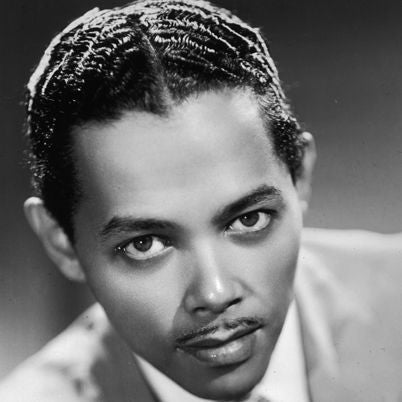**\n\n**Billy Eckstine** was one of the most popular singers and bandleaders of his day. As well, he has been held in high regard by musicians for his groundbreaking 1940's bebop big band, of which membership included Charlie Parker, Miles Davis, Art Blakey, Dizzy Gillespie, Sarah Vaughan, Kenny Dorham, Tadd Dameron, Fats Navarro, Wardell Gray, Dexter Gordon and others. That band was in effect a \"finishing school\" for musicians who would go on to legendary status themselves.\n\nEckstine was born in Pittsburgh and later attended high school in Washington DC. He was a gifted athlete but an injury curtailed his football career and jumpstarted his music career. In 1939 he moved to Chicago, taking a gig as trumpeter with Earl Hines. That aformentioned bebop big band started in NYC in '44.\n\nA multi-instrumentalist, he could play trumpet, trombone and guitar. He started a career as a \"solo\" singer and balladeer in the mid '40s and he became one of the most respected and best loved singers in the industry. His bass-baritone voice was inviting and he became a major star all through the '40s, appearing on television numerous times.\n\nA controversial 1950 photograph in _Life_ magazine of several white women displaying affection for Eckstine and one of them pressing against him turned the racists against him and his opportunities started to noticeably dwindle. Even with that, he still remained active, recording another hit duet with Sarah Vaughan (\"Passing Strangers\"). He also collaborated with Count Basie and Quincy Jones.\n\nHe did the Vegas thing in the early '60s, followed by stints at Motown and Stax. He made his final album with Benny Carter before retirement. From his innovative bop group to his groundbreaking role of black male sex symbol set to strings, Eckstine stands as a leader in several regards. His offspring have continued working in the entertainment industry.",
"filePath": "content/posts/billy-eckstine-july-8-1914-march-8-1993.md",
"digest": "95295dbd42b5834a",
"rendered": {
"html": "<p><strong><img src=\"/images/mr_b_001_large.jpg\" alt=\"\"></strong></p>\n<p><strong>Billy Eckstine</strong> was one of the most popular singers and bandleaders of his day. As well, he has been held in high regard by musicians for his groundbreaking 1940’s bebop big band, of which membership included Charlie Parker, Miles Davis, Art Blakey, Dizzy Gillespie, Sarah Vaughan, Kenny Dorham, Tadd Dameron, Fats Navarro, Wardell Gray, Dexter Gordon and others. That band was in effect a “finishing school” for musicians who would go on to legendary status themselves.</p>\n<p>Eckstine was born in Pittsburgh and later attended high school in Washington DC. He was a gifted athlete but an injury curtailed his football career and jumpstarted his music career. In 1939 he moved to Chicago, taking a gig as trumpeter with Earl Hines. That aformentioned bebop big band started in NYC in ‘44.</p>\n<p>A multi-instrumentalist, he could play trumpet, trombone and guitar. He started a career as a “solo” singer and balladeer in the mid ’40s and he became one of the most respected and best loved singers in the industry. His bass-baritone voice was inviting and he became a major star all through the ’40s, appearing on television numerous times.</p>\n<p>A controversial 1950 photograph in <em>Life</em> magazine of several white women displaying affection for Eckstine and one of them pressing against him turned the racists against him and his opportunities started to noticeably dwindle. Even with that, he still remained active, recording another hit duet with Sarah Vaughan (“Passing Strangers”). He also collaborated with Count Basie and Quincy Jones.</p>\n<p>He did the Vegas thing in the early ’60s, followed by stints at Motown and Stax. He made his final album with Benny Carter before retirement. From his innovative bop group to his groundbreaking role of black male sex symbol set to strings, Eckstine stands as a leader in several regards. His offspring have continued working in the entertainment industry.</p>",
"metadata": {
"headings": [],
"localImagePaths": [],
"remoteImagePaths": [],
"frontmatter": {
"web-scraper-order": "1746561840-368",
"web-scraper-start-url": "https://peaceandrhythm.com",
"title": "Billy Eckstine / July 8, 1914 - March 8, 1993",
"pagination": "https://www.peaceandrhythm.com/?page=39",
"date": "July 08, 2017",
"post": "Billy Eckstine / July 8, 1914 - March 8, 1993",
"post-href": "https://www.peaceandrhythm.com/blogs/news/billy-eckstine-july-8-1914-march-8-1993",
"slug": "billy-eckstine-july-8-1914-march-8-1993"
},
"imagePaths": []
}
},
"collection": "blog"
},
{
"id": "earl-van-dyke-july-8-1930-sept-18-1992",
"data": {
"title": "Earl Van Dyke / July 8, 1930 - Sept 18, 1992",
"slug": "earl-van-dyke-july-8-1930-sept-18-1992",
"date": "2017-07-08T00:00:00.000Z"
},
"body": "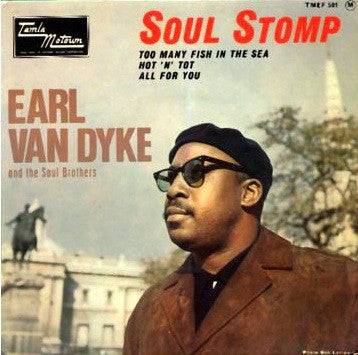\n\nHappy birthday to the Earl of Funk! Detroit native **Earl Van Dyke** spent a lot of time around the city's jazz cats, folks like Yusef Lateef, Barry Harris, Hank Jones and others. He met James Jamerson while touring with Lloyd Price, who convinced him to take a job with Motown, then an upstart label.\n\nHe started at Motown in '62. He served as the keyboardist on many classic Motown hits for many of its biggest stars, like Marvin Gaye, the Temptations, Four Tops, etc. He would open up Motown concerts with his own instrumental trio, usually playing alternate, instrumental versions of Motown hits. Given that Motown were severely underpaying their artists, Van Dyke took the band moonlighting for other labels, backing Edwin Starr on several tunes, as well as The Parliaments on \"Testify\" and The Capitols on \"Cool Jerk\", as well as tunes by Dionne Warwick, Jackie Wilson and The Platters.\n\nIn '65 Motown released an album for him and his \"Soul\" Brothers (Barry Gordy thought the word \"funk\" was offensive, that fuck.) The world now knows this band as The Funk Brothers. He recorded a couple of albums and several singles as a leader. He also gigged around as a jazz organist, including recording some Blue Note sessions with Ike Quebec and Fred Jackson. In the '70s he backed several touring artists in Detroit, including Sammy Davis Jr, Mel Torme and Freda Payne, whom he became musical director for. He continued to play and record a bit, there was another early '80s release, but he never really got his due.",
"filePath": "content/posts/earl-van-dyke-july-8-1930-sept-18-1992.md",
"digest": "918d32578df1fe45",
"rendered": {
"html": "<p><img src=\"/images/soulstomp_large.jpg\" alt=\"\"></p>\n<p>Happy birthday to the Earl of Funk! Detroit native <strong>Earl Van Dyke</strong> spent a lot of time around the city’s jazz cats, folks like Yusef Lateef, Barry Harris, Hank Jones and others. He met James Jamerson while touring with Lloyd Price, who convinced him to take a job with Motown, then an upstart label.</p>\n<p>He started at Motown in ‘62. He served as the keyboardist on many classic Motown hits for many of its biggest stars, like Marvin Gaye, the Temptations, Four Tops, etc. He would open up Motown concerts with his own instrumental trio, usually playing alternate, instrumental versions of Motown hits. Given that Motown were severely underpaying their artists, Van Dyke took the band moonlighting for other labels, backing Edwin Starr on several tunes, as well as The Parliaments on “Testify” and The Capitols on “Cool Jerk”, as well as tunes by Dionne Warwick, Jackie Wilson and The Platters.</p>\n<p>In ‘65 Motown released an album for him and his “Soul” Brothers (Barry Gordy thought the word “funk” was offensive, that fuck.) The world now knows this band as The Funk Brothers. He recorded a couple of albums and several singles as a leader. He also gigged around as a jazz organist, including recording some Blue Note sessions with Ike Quebec and Fred Jackson. In the ’70s he backed several touring artists in Detroit, including Sammy Davis Jr, Mel Torme and Freda Payne, whom he became musical director for. He continued to play and record a bit, there was another early ’80s release, but he never really got his due.</p>",
"metadata": {
"headings": [],
"localImagePaths": [],
"remoteImagePaths": [],
"frontmatter": {
"web-scraper-order": "1746561845-370",
"web-scraper-start-url": "https://peaceandrhythm.com",
"title": "Earl Van Dyke / July 8, 1930 - Sept 18, 1992",
"pagination": "https://www.peaceandrhythm.com/?page=38",
"date": "July 08, 2017",
"post": "Earl Van Dyke / July 8, 1930 - Sept 18, 1992",
"post-href": "https://www.peaceandrhythm.com/blogs/news/earl-van-dyke-july-8-1930-sept-18-1992",
"slug": "earl-van-dyke-july-8-1930-sept-18-1992"
},
"imagePaths": []
}
},
"collection": "blog"
},
{
"id": "louis-jordan-july-8-1908-feb-4-1975",
"data": {
"title": "Louis Jordan / July 8, 1908 - Feb 4, 1975",
"slug": "louis-jordan-july-8-1908-feb-4-1975",
"date": "2017-07-08T00:00:00.000Z"
},
"body": "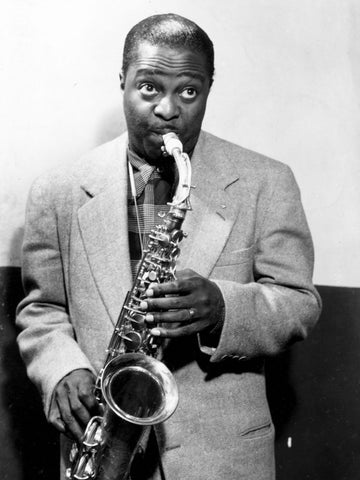\n\nA major star in his day, **Louis Jordan** STILL remains one of the most successful chart performers in black music history. R&B, rock & roll and rap can all be traced to this man, as well as what became known as the music video.\n\nFrom the Little Rock area, Jordan played saxophone and displayed a highly entertaining stage presence that mixed comedy, dancing, singing and his jumping band. He came from swing to develop the jump-blues style. He started out with the Chick Webb band in the '30s and became their popular frontman. His Decca sides of the '40s pretty much mapped out the future of music.\n\nHe produced \"soundies\", an early form of the music video, and did some acting as well, including one early all-black movie production. He pared his band down to a small combo of five men and that helped set the standard for the rock & roll bands to come. He also cut some duets with Louie Armstrong, Bing Crosby, Ella Fitzgerald and others.\n\nHe continued to play and record throughout the rest of his life, although his popularity dwindled and he was considered old hat by the early '60s. He did point out that rock & roll ripped off black artists. All told, he is one of the major architects of contemporary music.",
"filePath": "content/posts/louis-jordan-july-8-1908-feb-4-1975.md",
"digest": "a68e030fb3c0ea9d",
"rendered": {
"html": "<p><img src=\"/images/louis-jordan_vert-8e75bcf608956a56d22b739641cc00aef19da44f_large.jpg\" alt=\"\"></p>\n<p>A major star in his day, <strong>Louis Jordan</strong> STILL remains one of the most successful chart performers in black music history. R&B, rock & roll and rap can all be traced to this man, as well as what became known as the music video.</p>\n<p>From the Little Rock area, Jordan played saxophone and displayed a highly entertaining stage presence that mixed comedy, dancing, singing and his jumping band. He came from swing to develop the jump-blues style. He started out with the Chick Webb band in the ’30s and became their popular frontman. His Decca sides of the ’40s pretty much mapped out the future of music.</p>\n<p>He produced “soundies”, an early form of the music video, and did some acting as well, including one early all-black movie production. He pared his band down to a small combo of five men and that helped set the standard for the rock & roll bands to come. He also cut some duets with Louie Armstrong, Bing Crosby, Ella Fitzgerald and others.</p>\n<p>He continued to play and record throughout the rest of his life, although his popularity dwindled and he was considered old hat by the early ’60s. He did point out that rock & roll ripped off black artists. All told, he is one of the major architects of contemporary music.</p>",
"metadata": {
"headings": [],
"localImagePaths": [],
"remoteImagePaths": [],
"frontmatter": {
"web-scraper-order": "1746561842-369",
"web-scraper-start-url": "https://peaceandrhythm.com",
"title": "Louis Jordan / July 8, 1908 - Feb 4, 1975",
"pagination": "https://www.peaceandrhythm.com/?page=38",
"date": "July 08, 2017",
"post": "Louis Jordan / July 8, 1908 - Feb 4, 1975",
"post-href": "https://www.peaceandrhythm.com/blogs/news/louis-jordan-july-8-1908-feb-4-1975",
"slug": "louis-jordan-july-8-1908-feb-4-1975"
},
"imagePaths": []
}
},
"collection": "blog"
},
{
"id": "cheo-feliciano-july-3-1935-april-17-2014",
"data": {
"title": "Cheo Feliciano / July 3, 1935 - April 17, 2014",
"slug": "cheo-feliciano-july-3-1935-april-17-2014",
"date": "2017-07-03T00:00:00.000Z"
},
"body": "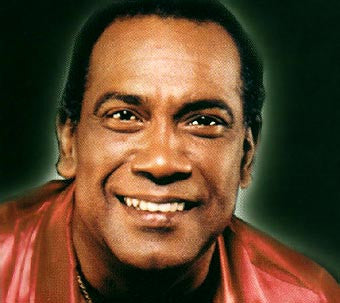\n\nFeliz cumpleaños to the great salsero **Cheo Feliciano**. Born in Ponce, Puerto Rico, his family moved in the '50s to Spanish Harlem. As a teenager he started playing percussion with Tito Rodriguez' orchestra and with Kako's group. As well, he toured as a roadie with Mon Rivera.\n\nIn 1956 he joined the Joe Cuba Sextet as their baritone-voiced Español-singing counterpart to the velvety English-languaged voice of Jimmy Sabater. The group became hot shit and made several amazing records for Tico and Seeco. In '67 Cheo left the group to join the Eddie Palmieri band. He sang with them until '69, when Cheo's heroin addiction forced him off the scene for a bit.\n\nAfter rehab and with support from Cheo's good friend the composerTite Curet Alonso, he made it back to the music scene with a solo album (_Cheo_) in '71, a huge seller. He recorded several albums (including boleros) for Vaya before founding his own Coche label in the early '80s. He performed in the 1987 stage musical _Clemente_ , about the ballplayer.\n\nHe signed to RMM in the '90s and continued recording and touring to great success, including collaborations with Palmieri, Rubén Blades, Fania All-Stars and the Salsa Giants. Just a month or two after winning a year-long battle with cancer Cheo died in a car accident in April '14 in Puerto Rico.",
"filePath": "content/posts/cheo-feliciano-july-3-1935-april-17-2014.md",
"digest": "24878aad6084ab30",
"rendered": {
"html": "<p><img src=\"/images/feliciano_cheo_large.jpg\" alt=\"\"></p>\n<p>Feliz cumpleaños to the great salsero <strong>Cheo Feliciano</strong>. Born in Ponce, Puerto Rico, his family moved in the ’50s to Spanish Harlem. As a teenager he started playing percussion with Tito Rodriguez’ orchestra and with Kako’s group. As well, he toured as a roadie with Mon Rivera.</p>\n<p>In 1956 he joined the Joe Cuba Sextet as their baritone-voiced Español-singing counterpart to the velvety English-languaged voice of Jimmy Sabater. The group became hot shit and made several amazing records for Tico and Seeco. In ‘67 Cheo left the group to join the Eddie Palmieri band. He sang with them until ‘69, when Cheo’s heroin addiction forced him off the scene for a bit.</p>\n<p>After rehab and with support from Cheo’s good friend the composerTite Curet Alonso, he made it back to the music scene with a solo album (<em>Cheo</em>) in ‘71, a huge seller. He recorded several albums (including boleros) for Vaya before founding his own Coche label in the early ’80s. He performed in the 1987 stage musical <em>Clemente</em> , about the ballplayer.</p>\n<p>He signed to RMM in the ’90s and continued recording and touring to great success, including collaborations with Palmieri, Rubén Blades, Fania All-Stars and the Salsa Giants. Just a month or two after winning a year-long battle with cancer Cheo died in a car accident in April ‘14 in Puerto Rico.</p>",
"metadata": {
"headings": [],
"localImagePaths": [],
"remoteImagePaths": [],
"frontmatter": {
"web-scraper-order": "1746561836-366",
"web-scraper-start-url": "https://peaceandrhythm.com",
"title": "Cheo Feliciano / July 3, 1935 - April 17, 2014",
"pagination": "https://www.peaceandrhythm.com/?page=39",
"date": "July 03, 2017",
"post": "Cheo Feliciano / July 3, 1935 - April 17, 2014",
"post-href": "https://www.peaceandrhythm.com/blogs/news/cheo-feliciano-july-3-1935-april-17-2014",
"slug": "cheo-feliciano-july-3-1935-april-17-2014"
},
"imagePaths": []
}
},
"collection": "blog"
},
{
"id": "fontella-bass-july-3-1940-dec-26-2012",
"data": {
"title": "Fontella Bass / July 3, 1940 - Dec 26, 2012",
"slug": "fontella-bass-july-3-1940-dec-26-2012",
"date": "2017-07-03T00:00:00.000Z"
},
"body": "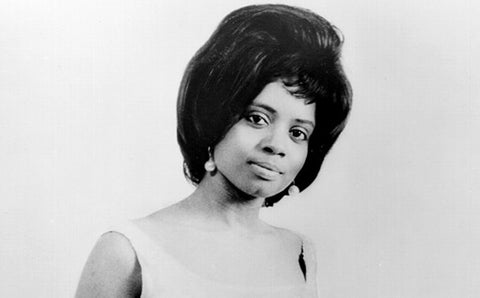\n\nI want to give some birthday love to one of my favorite figures from the '60s soul scene, the underrated **Fontella Bass**! Fontella is most remembered for a song that everyone knows but many people think is by Aretha Franklin! \"Rescue Me\" was a #1 hit in 1965 for Chess Records, their biggest seller since Chuck Berry's mid-'50s reign. Bass was denied songwriting credit, despite her contribution as a co-author. The tune has lasted forever and has been covered many, many times, as well as used in movies, ads, etc. The song was banned from radio by Clear Channel after 9/11, but what fools they proved to be!\n\nBass was from a gospel-singing family in St Louis and she learned to play piano at 5 and was touring with her mother, Martha Bass, from ages 9-15. As a teenager she was playing with a carnival, as well as backing Little Milton. When Milton's bandleader Oliver Sain broke off, Bass joined Sain's group as co-lead vocalist. She also worked with Ike Turner in St Louis (a duet with Tina called \"Poor Little Fool\").\n\nShe married another native St Louis musician from Little Milton's band, trumpeter Lester Bowie. In the mid-'60s the couple moved to Chicago where she signed to Chess and Lester was a founding member of the avant-garde group Art Ensemble of Chicago. After the success of \"Rescue Me\" and the failure to secure her proper rewards, she quit and Lester and Fontella moved to Paris with the Art Ensemble, with whom she joined as fifth member at times. (Check out the cult funk-jazz hit \"Theme De Yoyo\"--yup, that's Fontella wailing on vocals!). \n\nShe made a few scattered recordings in the '70s for America, Paula, Gusto and Soul Note (a family record), covering soul, gospel, jazz and disco. She cut some disks with her husband as well as an interesting collaboration with World Saxophone Quartet in '94 and an album with David Murray in '99. Lester died in '99 and the song she wrote in his honor, \"All That You Give\", surfaced on an album by Cinematic Orchestra (the underrated _Every Day_ on Ninja Tune) in 2002. \n\nShe became ill with various dominoing ailments and passed the day after Christmas 2012. An interesting career, no doubt, from gospel to a #1 pop hit to free jazz to disco to collaborating with a UK underground group. \"Rescue Me\" and \"Theme De Yoyo\" surely stand as her two best-known tunes.",
"filePath": "content/posts/fontella-bass-july-3-1940-dec-26-2012.md",
"digest": "f045dfa4257e19dc",
"rendered": {
"html": "<p><img src=\"/images/Fontella-Bass_large.jpg\" alt=\"\"></p>\n<p>I want to give some birthday love to one of my favorite figures from the ’60s soul scene, the underrated <strong>Fontella Bass</strong>! Fontella is most remembered for a song that everyone knows but many people think is by Aretha Franklin! “Rescue Me” was a #1 hit in 1965 for Chess Records, their biggest seller since Chuck Berry’s mid-’50s reign. Bass was denied songwriting credit, despite her contribution as a co-author. The tune has lasted forever and has been covered many, many times, as well as used in movies, ads, etc. The song was banned from radio by Clear Channel after 9/11, but what fools they proved to be!</p>\n<p>Bass was from a gospel-singing family in St Louis and she learned to play piano at 5 and was touring with her mother, Martha Bass, from ages 9-15. As a teenager she was playing with a carnival, as well as backing Little Milton. When Milton’s bandleader Oliver Sain broke off, Bass joined Sain’s group as co-lead vocalist. She also worked with Ike Turner in St Louis (a duet with Tina called “Poor Little Fool”).</p>\n<p>She married another native St Louis musician from Little Milton’s band, trumpeter Lester Bowie. In the mid-’60s the couple moved to Chicago where she signed to Chess and Lester was a founding member of the avant-garde group Art Ensemble of Chicago. After the success of “Rescue Me” and the failure to secure her proper rewards, she quit and Lester and Fontella moved to Paris with the Art Ensemble, with whom she joined as fifth member at times. (Check out the cult funk-jazz hit “Theme De Yoyo”—yup, that’s Fontella wailing on vocals!).</p>\n<p>She made a few scattered recordings in the ’70s for America, Paula, Gusto and Soul Note (a family record), covering soul, gospel, jazz and disco. She cut some disks with her husband as well as an interesting collaboration with World Saxophone Quartet in ‘94 and an album with David Murray in ‘99. Lester died in ‘99 and the song she wrote in his honor, “All That You Give”, surfaced on an album by Cinematic Orchestra (the underrated <em>Every Day</em> on Ninja Tune) in 2002.</p>\n<p>She became ill with various dominoing ailments and passed the day after Christmas 2012. An interesting career, no doubt, from gospel to a #1 pop hit to free jazz to disco to collaborating with a UK underground group. “Rescue Me” and “Theme De Yoyo” surely stand as her two best-known tunes.</p>",
"metadata": {
"headings": [],
"localImagePaths": [],
"remoteImagePaths": [],
"frontmatter": {
"web-scraper-order": "1746561838-367",
"web-scraper-start-url": "https://peaceandrhythm.com",
"title": "Fontella Bass / July 3, 1940 - Dec 26, 2012",
"pagination": "https://www.peaceandrhythm.com/?page=39",
"date": "July 03, 2017",
"post": "Fontella Bass / July 3, 1940 - Dec 26, 2012",
"post-href": "https://www.peaceandrhythm.com/blogs/news/fontella-bass-july-3-1940-dec-26-2012",
"slug": "fontella-bass-july-3-1940-dec-26-2012"
},
"imagePaths": []
}
},
"collection": "blog"
},
{
"id": "poly-styrene-july-3-1957-april-25-2011",
"data": {
"title": "Poly Styrene / July 3, 1957 - April 25, 2011",
"slug": "poly-styrene-july-3-1957-april-25-2011",
"date": "2017-07-03T00:00:00.000Z"
},
"body": "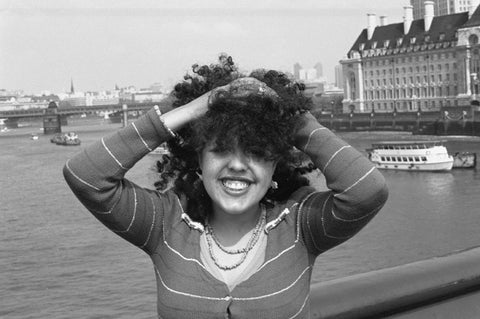\n\nAn early riot grrl influence and a punk rock icon, **Poly Styrene** was the front woman for the awesome first-wave British punk band X-Ray Spex. Her powerful voice paired well with the sax of Lora Logic on classics like \"Oh Bondage, Up Yours!\".\n\nBorn to a Somali father and Scottish-Irish mother, Marian Joan Elliott-Said was trained in opera but seeing the Sex Pistols on her 19th birthday inspired her to take the punk name \"Poly Styrene\" and start her band X-Ray Spex. She was also a ska fan from the time. X-Ray Spex may have been short-lived and underdocumented but they were a vital part of the British punk scene of the late '70s and stand as one the countries great bands of the era.\n\nAfter X-Ray Spex broke up in '79, and perhaps influenced by Hare Krishnas, she recorded some less hard-edged material before returning with X Ray Spex in the early '90s. She also collaborated with Goldblade in 2007 & 2008 before making more solo records, including her final one, _Generation Indigo_ , released one month before her death from cancer.",
"filePath": "content/posts/poly-styrene-july-3-1957-april-25-2011.md",
"digest": "7bb9a963a825b0b0",
"rendered": {
"html": "<p><img src=\"/images/2_4_large.jpg\" alt=\"\"></p>\n<p>An early riot grrl influence and a punk rock icon, <strong>Poly Styrene</strong> was the front woman for the awesome first-wave British punk band X-Ray Spex. Her powerful voice paired well with the sax of Lora Logic on classics like “Oh Bondage, Up Yours!”.</p>\n<p>Born to a Somali father and Scottish-Irish mother, Marian Joan Elliott-Said was trained in opera but seeing the Sex Pistols on her 19th birthday inspired her to take the punk name “Poly Styrene” and start her band X-Ray Spex. She was also a ska fan from the time. X-Ray Spex may have been short-lived and underdocumented but they were a vital part of the British punk scene of the late ’70s and stand as one the countries great bands of the era.</p>\n<p>After X-Ray Spex broke up in ‘79, and perhaps influenced by Hare Krishnas, she recorded some less hard-edged material before returning with X Ray Spex in the early ’90s. She also collaborated with Goldblade in 2007 & 2008 before making more solo records, including her final one, <em>Generation Indigo</em> , released one month before her death from cancer.</p>",
"metadata": {
"headings": [],
"localImagePaths": [],
"remoteImagePaths": [],
"frontmatter": {
"web-scraper-order": "1746561833-365",
"web-scraper-start-url": "https://peaceandrhythm.com",
"title": "Poly Styrene / July 3, 1957 - April 25, 2011",
"pagination": "https://www.peaceandrhythm.com/?page=39",
"date": "July 03, 2017",
"post": "Poly Styrene / July 3, 1957 - April 25, 2011",
"post-href": "https://www.peaceandrhythm.com/blogs/news/poly-styrene-july-3-1957-april-25-2011",
"slug": "poly-styrene-july-3-1957-april-25-2011"
},
"imagePaths": []
}
},
"collection": "blog"
},
{
"id": "rashied-ali-july-1-1933-aug-12-2009",
"data": {
"title": "Rashied Ali / July 1, 1933 - Aug 12, 2009",
"slug": "rashied-ali-july-1-1933-aug-12-2009",
"date": "2017-07-01T00:00:00.000Z"
},
"body": "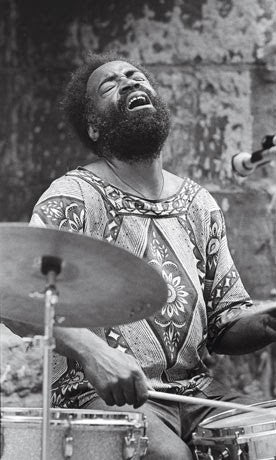\n\nBack when I played a drumkit, it wasn't Tony Allen who was my biggest influence. Nor was it Keith Moon, Mitch Mitchell, Art Blakey or anyone else. It was **Rashied Ali**! Someone once asked if a recording that was being played had Rashied on drums, and I was thrilled to tell him that it was actually me! But never in a million years could I match Ali in chops but I certainly dug his polytonal expression and unique waves of sound on the kit.\n\nMost famous for being John Coltrane's last drummer (and for the duo album they did together, _Interstellar Space_), Ali was born with the Christian name Robert Patterson (his brother, Raymond, became Muhammad Ali, another free jazz drummer of note) in a musical family in Philly. He played piano, trumpet and trombone before settling on drums and studying with Philly Joe Jones and gigging with Lee Morgan, Jimmy Smith and several R&B bands.\n\nIn '63 he moved to NYC and played with Bud Powell, Paul Bley, Sonny Rollins, Don Cherry and Bill Dixon before joining Trane's group as 2nd drummer, eventually knocking Elvin Jones out of the group. He played with Marion Brown, Archie Shepp and Burton Greene in the mid-'60s. After Trane's passing, he worked with Alice Coltrane but other than her and one-off records with Jackie McLean, Alan Shorter and Gary Bartz, his work was held down. Facing an blacklist (for his outspokenness and his Muslim faith), he was the only one of Coltrane's major collaborators who did not receive a record deal from Impulse! Records.\n\nSo Ali started his own Survival Records, which released most of his '70s output, including duos with Leroy Jenkins and Frank Lowe. He joined up, in similar independent fashion, with Frank Wright. His own groups included the likes of James \"Blood\" Ulmer and B.T. Express's Carlos Ward. Also in the '70s he opened his own club, Ali's Alley. But his business and musical career went on hiatus when the mafia broke his wrists for his refusal to sell alcohol at the venue. He battled wrist problems for the rest of his life.\n\nAfter some healing, he resurfaced with the NYC no-wave punk improv band the Blue Humans, as well as gigging at said shows with his Freeboppers band. The early '80s saw him working with Ulmer's Phalanx, Saheb Sarbib, Afro-Algonquin, Arthur Rhames, Jaco Pastorious, Peter Kowald, Byard Lancaster and others, and later on with Prima Materia, David Murray, Sonny Fortune, Marilyn Crispell, Keiji Heino, Peter Brotzmann, Henry Grimes, Joe McPhee, Henry Rollins, Bill Laswell and the amazing trio with William Parker and Charles Gayle called By Any Means. Seeing that last group at The Cooler in NYC's Meatpacking District around '94 is a musical highlight for me. Much respect.",
"filePath": "content/posts/rashied-ali-july-1-1933-aug-12-2009.md",
"digest": "8ce3fa2e93b07c1a",
"rendered": {
"html": "<p><img src=\"/images/RashiedAli_large.jpg\" alt=\"\"></p>\n<p>Back when I played a drumkit, it wasn’t Tony Allen who was my biggest influence. Nor was it Keith Moon, Mitch Mitchell, Art Blakey or anyone else. It was <strong>Rashied Ali</strong>! Someone once asked if a recording that was being played had Rashied on drums, and I was thrilled to tell him that it was actually me! But never in a million years could I match Ali in chops but I certainly dug his polytonal expression and unique waves of sound on the kit.</p>\n<p>Most famous for being John Coltrane’s last drummer (and for the duo album they did together, <em>Interstellar Space</em>), Ali was born with the Christian name Robert Patterson (his brother, Raymond, became Muhammad Ali, another free jazz drummer of note) in a musical family in Philly. He played piano, trumpet and trombone before settling on drums and studying with Philly Joe Jones and gigging with Lee Morgan, Jimmy Smith and several R&B bands.</p>\n<p>In ‘63 he moved to NYC and played with Bud Powell, Paul Bley, Sonny Rollins, Don Cherry and Bill Dixon before joining Trane’s group as 2nd drummer, eventually knocking Elvin Jones out of the group. He played with Marion Brown, Archie Shepp and Burton Greene in the mid-’60s. After Trane’s passing, he worked with Alice Coltrane but other than her and one-off records with Jackie McLean, Alan Shorter and Gary Bartz, his work was held down. Facing an blacklist (for his outspokenness and his Muslim faith), he was the only one of Coltrane’s major collaborators who did not receive a record deal from Impulse! Records.</p>\n<p>So Ali started his own Survival Records, which released most of his ’70s output, including duos with Leroy Jenkins and Frank Lowe. He joined up, in similar independent fashion, with Frank Wright. His own groups included the likes of James “Blood” Ulmer and B.T. Express’s Carlos Ward. Also in the ’70s he opened his own club, Ali’s Alley. But his business and musical career went on hiatus when the mafia broke his wrists for his refusal to sell alcohol at the venue. He battled wrist problems for the rest of his life.</p>\n<p>After some healing, he resurfaced with the NYC no-wave punk improv band the Blue Humans, as well as gigging at said shows with his Freeboppers band. The early ’80s saw him working with Ulmer’s Phalanx, Saheb Sarbib, Afro-Algonquin, Arthur Rhames, Jaco Pastorious, Peter Kowald, Byard Lancaster and others, and later on with Prima Materia, David Murray, Sonny Fortune, Marilyn Crispell, Keiji Heino, Peter Brotzmann, Henry Grimes, Joe McPhee, Henry Rollins, Bill Laswell and the amazing trio with William Parker and Charles Gayle called By Any Means. Seeing that last group at The Cooler in NYC’s Meatpacking District around ‘94 is a musical highlight for me. Much respect.</p>",
"metadata": {
"headings": [],
"localImagePaths": [],
"remoteImagePaths": [],
"frontmatter": {
"web-scraper-order": "1746561831-364",
"web-scraper-start-url": "https://peaceandrhythm.com",
"title": "Rashied Ali / July 1, 1933 - Aug 12, 2009",
"pagination": "https://www.peaceandrhythm.com/?page=39",
"date": "July 01, 2017",
"post": "Rashied Ali / July 1, 1933 - Aug 12, 2009",
"post-href": "https://www.peaceandrhythm.com/blogs/news/rashied-ali-july-1-1933-aug-12-2009",
"slug": "rashied-ali-july-1-1933-aug-12-2009"
},
"imagePaths": []
}
},
"collection": "blog"
},
{
"id": "willie-dixon-july-1-1915-jan-29-1992",
"data": {
"title": "Willie Dixon / July 1, 1915 - Jan 29, 1992",
"slug": "willie-dixon-july-1-1915-jan-29-1992",
"date": "2017-07-01T00:00:00.000Z"
},
"body": "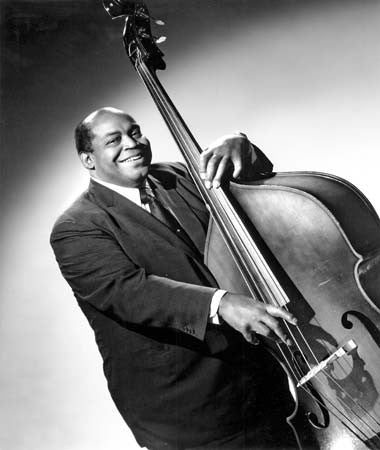\n\nOne of the most influential of blues musicians, **Willie Dixon** was a composer, singer, bassist, guitarist and record producer who was responsible for writing (or modernizing) long-standing jams like \"Spoonful\", \"I Just Wanna Make Love To You\", \"Evil\", \"I Ain't Superstitious\", \"Wang Dang Doodle\", \"Hoochie-Coochie Man\", \"My Babe\" and many more.\n\nBorn in Mississippi, he heard the blues on a prison farm in the late '20s and a few years later was singing the bass part in a gospel group and selling songs to local singers. In 1936 he moved to Chicago and was a successful professional boxer before dropping out due to corruption in the sport. He learned to play the bass and guitar and started gigging in an Ink Spots-type ensemble called The Five Breezes that recorded for Bluebird.\n\nDuring WW2 he refused to fight for a country that allowed institutional racism, spending nearly a year in the clink as a conscientious objector. After release, his Big Three Trio released records on Columbia. He started working with Chess Records at its formation, his duties included session work, scouting talent, producing, arranging and composing. Indeed he contributed to most of the big records they did in the '50s. He also worked for Cobra as a producer as well as starting his own Yambo label after leaving Chess.\n\nHe worked with Memphis Slim & Pete Seeger in the early '60s, releasing some sides on Folkways. He helped present American blues across Europe for many years. His contribution in shaping blues and rock & roll were immense and the covers by white rock bands came flooding in after his \"Little Red Rooster\" became a #1 hit in '64 as recorded by the Rolling Stones. As an advocate for musician's rights and with a desire to find royalties for exploited musicians he founded the Blues Heaven Foundation.",
"filePath": "content/posts/willie-dixon-july-1-1915-jan-29-1992.md",
"digest": "d50e2a79e1d33f24",
"rendered": {
"html": "<p><img src=\"/images/8097-004-9F18D397_large.jpg\" alt=\"\"></p>\n<p>One of the most influential of blues musicians, <strong>Willie Dixon</strong> was a composer, singer, bassist, guitarist and record producer who was responsible for writing (or modernizing) long-standing jams like “Spoonful”, “I Just Wanna Make Love To You”, “Evil”, “I Ain’t Superstitious”, “Wang Dang Doodle”, “Hoochie-Coochie Man”, “My Babe” and many more.</p>\n<p>Born in Mississippi, he heard the blues on a prison farm in the late ’20s and a few years later was singing the bass part in a gospel group and selling songs to local singers. In 1936 he moved to Chicago and was a successful professional boxer before dropping out due to corruption in the sport. He learned to play the bass and guitar and started gigging in an Ink Spots-type ensemble called The Five Breezes that recorded for Bluebird.</p>\n<p>During WW2 he refused to fight for a country that allowed institutional racism, spending nearly a year in the clink as a conscientious objector. After release, his Big Three Trio released records on Columbia. He started working with Chess Records at its formation, his duties included session work, scouting talent, producing, arranging and composing. Indeed he contributed to most of the big records they did in the ’50s. He also worked for Cobra as a producer as well as starting his own Yambo label after leaving Chess.</p>\n<p>He worked with Memphis Slim & Pete Seeger in the early ’60s, releasing some sides on Folkways. He helped present American blues across Europe for many years. His contribution in shaping blues and rock & roll were immense and the covers by white rock bands came flooding in after his “Little Red Rooster” became a #1 hit in ‘64 as recorded by the Rolling Stones. As an advocate for musician’s rights and with a desire to find royalties for exploited musicians he founded the Blues Heaven Foundation.</p>",
"metadata": {
"headings": [],
"localImagePaths": [],
"remoteImagePaths": [],
"frontmatter": {
"web-scraper-order": "1746561829-363",
"web-scraper-start-url": "https://peaceandrhythm.com",
"title": "Willie Dixon / July 1, 1915 - Jan 29, 1992",
"pagination": "https://www.peaceandrhythm.com/?page=40",
"date": "July 01, 2017",
"post": "Willie Dixon / July 1, 1915 - Jan 29, 1992",
"post-href": "https://www.peaceandrhythm.com/blogs/news/willie-dixon-july-1-1915-jan-29-1992",
"slug": "willie-dixon-july-1-1915-jan-29-1992"
},
"imagePaths": []
}
},
"collection": "blog"
},
{
"id": "andrew-hill-june-30-1931-april-20-2007",
"data": {
"title": "Andrew Hill / June 30, 1931 - April 20, 2007",
"slug": "andrew-hill-june-30-1931-april-20-2007",
"date": "2017-06-30T00:00:00.000Z"
},
"body": "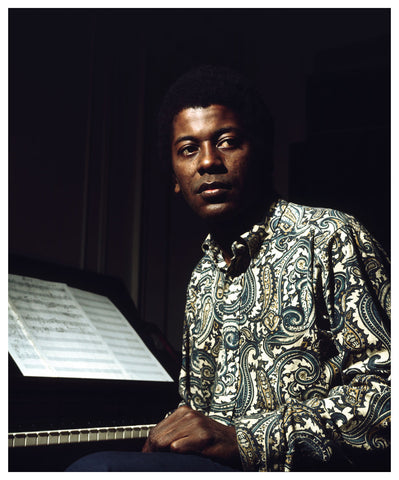\n\nThe modern jazz pianist/composer **Andrew Hill** came from a musical West Indian family in Chicago. A prodigy, he first played accordion, sang and tap-danced before he taking up piano. He studied with Earl Hines, Pat Patrick and German composer Paul Hindemith and as a teenager played clubs, backing artists like Miles Davis, Coleman Hawkins and Charlie Parker. He toured in Dinah Washington's band and settled in NYC in '61.\n\nHe worked with Johnny Hartman, Roland Kirk, Al Hibbler and others before a series of strikingly original and phenomenal recordings with the Blue Note label brought him acclaim from the musicians' scene. A rhythmic player with extended harmonic concepts, his classics _Smoke Stack_ , _Point Of Departure_ , _Judgement_ , _Andrew!!_ , _Black Fire_ and _Compulsion_ were all recorded in the mid '60s and show a progressive compositional approach and some great soloists (Eric Dolphy, John Gilmore, Tony Williams, Richard Davis and other bright lights helped realize these Hill compositions).\n\nHe contributed heavily to Bobby Hutcherson's classic _Dialogue_ album and played on sides by Joe Henderson, Hank Mobley and others during this period. Later recordings were also excellent and included works for vocalists, big band, solo and trio. In fact, they have issued \"lost\" Hill recordings of great quality on several occasions long after the sessions were logged. He maintained a career as an educator and was able to pick his own projects for the remainder of his career. He died of lung cancer in 2007.",
"filePath": "content/posts/andrew-hill-june-30-1931-april-20-2007.md",
"digest": "f6b7ab9569f914d4",
"rendered": {
"html": "<p><img src=\"/images/andrew-hill_large.jpg\" alt=\"\"></p>\n<p>The modern jazz pianist/composer <strong>Andrew Hill</strong> came from a musical West Indian family in Chicago. A prodigy, he first played accordion, sang and tap-danced before he taking up piano. He studied with Earl Hines, Pat Patrick and German composer Paul Hindemith and as a teenager played clubs, backing artists like Miles Davis, Coleman Hawkins and Charlie Parker. He toured in Dinah Washington’s band and settled in NYC in ‘61.</p>\n<p>He worked with Johnny Hartman, Roland Kirk, Al Hibbler and others before a series of strikingly original and phenomenal recordings with the Blue Note label brought him acclaim from the musicians’ scene. A rhythmic player with extended harmonic concepts, his classics <em>Smoke Stack</em> , <em>Point Of Departure</em> , <em>Judgement</em> , <em>Andrew!!</em> , <em>Black Fire</em> and <em>Compulsion</em> were all recorded in the mid ’60s and show a progressive compositional approach and some great soloists (Eric Dolphy, John Gilmore, Tony Williams, Richard Davis and other bright lights helped realize these Hill compositions).</p>\n<p>He contributed heavily to Bobby Hutcherson’s classic <em>Dialogue</em> album and played on sides by Joe Henderson, Hank Mobley and others during this period. Later recordings were also excellent and included works for vocalists, big band, solo and trio. In fact, they have issued “lost” Hill recordings of great quality on several occasions long after the sessions were logged. He maintained a career as an educator and was able to pick his own projects for the remainder of his career. He died of lung cancer in 2007.</p>",
"metadata": {
"headings": [],
"localImagePaths": [],
"remoteImagePaths": [],
"frontmatter": {
"web-scraper-order": "1746561826-362",
"web-scraper-start-url": "https://peaceandrhythm.com",
"title": "Andrew Hill / June 30, 1931 - April 20, 2007",
"pagination": "https://www.peaceandrhythm.com/?page=40",
"date": "June 30, 2017",
"post": "Andrew Hill / June 30, 1931 - April 20, 2007",
"post-href": "https://www.peaceandrhythm.com/blogs/news/andrew-hill-june-30-1931-april-20-2007",
"slug": "andrew-hill-june-30-1931-april-20-2007"
},
"imagePaths": []
}
},
"collection": "blog"
},
{
"id": "tata-guines-june-30-1930-feb-4-2008",
"data": {
"title": "Tata Güines / June 30, 1930 - Feb 4, 2008",
"slug": "tata-guines-june-30-1930-feb-4-2008",
"date": "2017-06-30T00:00:00.000Z"
},
"body": "\n\nThe King of the Congas, **Tata Güines** was a shoe-maker and a bassist before he became one of the most prestigious and important percussionists in Cuban music. After some early study with Chano Pozo, his professional career took off in the '50s, playing in Havana with the likes of Arsenio Rodriguez, Bebo Valdés, Chico O'Farrill, Peruchín, Cachao, Frank Emilio Flynn and others.\n\nIn '52 he toured South America with Jose Fajardo. In 1957 he went to NYC, where he worked with Frank Sinatra, Miles Davis, Dizzy Gillespie, Josephine Baker and others. He became a featured soloist on the NYC scene, helping ignite interest in Afro-Cuban percussion Stateside. He could sing and play five congas.\n\nIn 1959, in full support of Fidel Castro (including, they say, financially) he went back to Cuba after the Revolution, citing racist hostilities in the States as a big reason. While his political persuasion alienated him from much of the \"exiled\" community, he continued to record in Cuba and tour with the state's blessing in Latin America and Eastern Europe. In 1979 he participated in the _Estrellas de Areito_ sessions, as well as the infamous _Havana Jam_ with US and Cuban musicians playing the festival, leaving a completely awestruck Jaco Pastorius completely giddy. He was mentor to future master Angá Díaz. He worked with Cubanismo, Ruben Gozalez, Diego el Cigala, Jane Bunnett and others, with a busy schedule right up until his death from kidney failure at 77.",
"filePath": "content/posts/tata-guines-june-30-1930-feb-4-2008.md",
"digest": "6e63cb09d4d93d48",
"rendered": {
"html": "<p><img src=\"//cdn.shopify.com/s/files/1/1521/8838/files/Tata_Guines_large.JPG?v=1498151381\" alt=\"\"></p>\n<p>The King of the Congas, <strong>Tata Güines</strong> was a shoe-maker and a bassist before he became one of the most prestigious and important percussionists in Cuban music. After some early study with Chano Pozo, his professional career took off in the ’50s, playing in Havana with the likes of Arsenio Rodriguez, Bebo Valdés, Chico O’Farrill, Peruchín, Cachao, Frank Emilio Flynn and others.</p>\n<p>In ‘52 he toured South America with Jose Fajardo. In 1957 he went to NYC, where he worked with Frank Sinatra, Miles Davis, Dizzy Gillespie, Josephine Baker and others. He became a featured soloist on the NYC scene, helping ignite interest in Afro-Cuban percussion Stateside. He could sing and play five congas.</p>\n<p>In 1959, in full support of Fidel Castro (including, they say, financially) he went back to Cuba after the Revolution, citing racist hostilities in the States as a big reason. While his political persuasion alienated him from much of the “exiled” community, he continued to record in Cuba and tour with the state’s blessing in Latin America and Eastern Europe. In 1979 he participated in the <em>Estrellas de Areito</em> sessions, as well as the infamous <em>Havana Jam</em> with US and Cuban musicians playing the festival, leaving a completely awestruck Jaco Pastorius completely giddy. He was mentor to future master Angá Díaz. He worked with Cubanismo, Ruben Gozalez, Diego el Cigala, Jane Bunnett and others, with a busy schedule right up until his death from kidney failure at 77.</p>",
"metadata": {
"headings": [],
"localImagePaths": [],
"remoteImagePaths": [],
"frontmatter": {
"web-scraper-order": "1746561824-361",
"web-scraper-start-url": "https://peaceandrhythm.com",
"title": "Tata Güines / June 30, 1930 - Feb 4, 2008",
"pagination": "https://www.peaceandrhythm.com/?page=40",
"date": "June 30, 2017",
"post": "Tata Güines / June 30, 1930 - Feb 4, 2008",
"post-href": "https://www.peaceandrhythm.com/blogs/news/tata-guines-june-30-1930-feb-4-2008",
"slug": "tata-guines-june-30-1930-feb-4-2008"
},
"imagePaths": []
}
},
"collection": "blog"
},
{
"id": "bernard-herrmann-june-29-1911-dec-24-1975",
"data": {
"title": "Bernard Herrmann / June 29, 1911 - Dec 24, 1975",
"slug": "bernard-herrmann-june-29-1911-dec-24-1975",
"date": "2017-06-29T00:00:00.000Z"
},
"body": "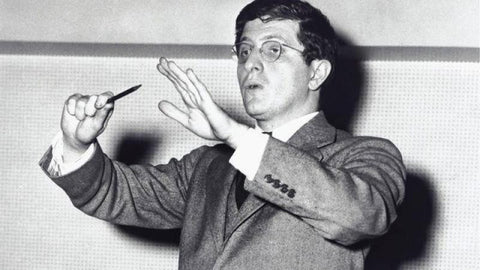\n\nA very significant 20th-century composer, **Bernard Herrmann** is best known for his film scores, especially for Alfred Hitchcock. A Russian-American Jew, he grew up in NYC and found work as a composer and conductor in the world of classical music after his schooling at Julliard. During the Great Depression of the '30s he was able to put together his own orchestra of out-of-work musicians and played the music of underknown composers, including Charles Ives, whom Herrmann championed. He did a lot of work for Orson Welles, including scoring Welles' first film _Citizen Kane_ , as well as several radio works such as _War of the Worlds_. \n\nAfter having his work on _The Magnificent Ambersons_ edited and butchered (as happened to Welles for the film itself), he only accepted jobs where he had complete artistic control. This would include the _Psycho_ shower scene, as Hitchcock originally wanted the scene silent. He ended his association with Hitchcock after the director tried to get him to do a pop music score for _Torn Curtain_. Bernard walked off the project. \n\nHis films for Hitchcock included _Psycho_ (those strings!), _North By Northwest_ , _Marnie_ , _The Wrong Man_ , _Vertigo_ and others. Other well known cinematic works of his doing include the original _Cape Fear,_ the classic use of theremin for 1951's _The Day The Earth Stood Still_ and work for Francois Truffaut, Brian DePalma, Nicolas Ray and Martin Scorsese. And that doesn't include his concert music, compositions for TV (_The Twilight Zone_) and radio (he scored Aldous Huxley's _Brave New World_) and the project that took up the largest number of years to make, his _Wuthering Heights_ opera ('51), which never saw a complete production of it in his lifetime. He died the day after he finished the score for _Taxi Driver_.",
"filePath": "content/posts/bernard-herrmann-june-29-1911-dec-24-1975.md",
"digest": "0fe7ee88252b3b57",
"rendered": {
"html": "<p><img src=\"/images/bernard_herrmann_large.jpg\" alt=\"\"></p>\n<p>A very significant 20th-century composer, <strong>Bernard Herrmann</strong> is best known for his film scores, especially for Alfred Hitchcock. A Russian-American Jew, he grew up in NYC and found work as a composer and conductor in the world of classical music after his schooling at Julliard. During the Great Depression of the ’30s he was able to put together his own orchestra of out-of-work musicians and played the music of underknown composers, including Charles Ives, whom Herrmann championed. He did a lot of work for Orson Welles, including scoring Welles’ first film <em>Citizen Kane</em> , as well as several radio works such as <em>War of the Worlds</em>.</p>\n<p>After having his work on <em>The Magnificent Ambersons</em> edited and butchered (as happened to Welles for the film itself), he only accepted jobs where he had complete artistic control. This would include the <em>Psycho</em> shower scene, as Hitchcock originally wanted the scene silent. He ended his association with Hitchcock after the director tried to get him to do a pop music score for <em>Torn Curtain</em>. Bernard walked off the project.</p>\n<p>His films for Hitchcock included <em>Psycho</em> (those strings!), <em>North By Northwest</em> , <em>Marnie</em> , <em>The Wrong Man</em> , <em>Vertigo</em> and others. Other well known cinematic works of his doing include the original <em>Cape Fear,</em> the classic use of theremin for 1951’s <em>The Day The Earth Stood Still</em> and work for Francois Truffaut, Brian DePalma, Nicolas Ray and Martin Scorsese. And that doesn’t include his concert music, compositions for TV (<em>The Twilight Zone</em>) and radio (he scored Aldous Huxley’s <em>Brave New World</em>) and the project that took up the largest number of years to make, his <em>Wuthering Heights</em> opera (‘51), which never saw a complete production of it in his lifetime. He died the day after he finished the score for <em>Taxi Driver</em>.</p>",
"metadata": {
"headings": [],
"localImagePaths": [],
"remoteImagePaths": [],
"frontmatter": {
"web-scraper-order": "1746561821-360",
"web-scraper-start-url": "https://peaceandrhythm.com",
"title": "Bernard Herrmann / June 29, 1911 - Dec 24, 1975",
"pagination": "https://www.peaceandrhythm.com/?page=40",
"date": "June 29, 2017",
"post": "Bernard Herrmann / June 29, 1911 - Dec 24, 1975",
"post-href": "https://www.peaceandrhythm.com/blogs/news/bernard-herrmann-june-29-1911-dec-24-1975",
"slug": "bernard-herrmann-june-29-1911-dec-24-1975"
},
"imagePaths": []
}
},
"collection": "blog"
},
{
"id": "honeyboy-edwards-june-28-1915-aug-29-2011",
"data": {
"title": "Honeyboy Edwards / June 28, 1915 - Aug 29, 2011",
"slug": "honeyboy-edwards-june-28-1915-aug-29-2011",
"date": "2017-06-28T00:00:00.000Z"
},
"body": "**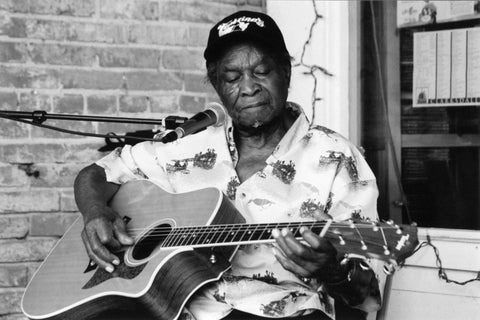**\n\n**David \"Honeyboy\" Edwards** lived to be nearly a hundred years old! The Delta bluesman was playing concerts right up until the day he died and I was fortunate enough to catch him with Corey Harris in Massachusetts many moons ago. Not only had he been a living, breathing representative of live old school Delta blues well into the new millennium, but he was doubly important to blues scholars as a man who could fill in some details on long-gone figures, such as his close friend Robert Johnson, whom he toured with and was present the night Johnson was poisoned. He also knew Charley Patton, Johnny Shines, Robert Petway, Pinetop Perkins and more.\n\nEdwards grew up picking cotton but went on the road at 14 with Big Joe Williams and his career brought him trainhopping all over the place for the next few decades until he made formed a band in Chicago in the '70s. His limited recorded output to that point were some sides with Alan Lomax in '42 (issued on Folkways) and his first commercial record in '51 for the Arc label, four tunes for Chess in '53 and his first full-length LP in '78.\n\nFrom then on he continued touring and making albums (including collaborations with Perkins, Sunnyland Slim, Kansas City Red, Michael Frank, Henry Townsend, Walter Horton and others). He composed the blues standard \"Just Like Jesse James\". A lifetime of trainhopping and nomadic traveling from town-to-town was given view in his autobiography _The World Don't Owe Me Nothing_ (published in '97). He was featured in the movie _The Search For Robert Johnson_ and had a doc made about his own life and career (_Honeyboy And The History Of The Blues_). He died at 96, on a day when he was scheduled to perform in Chicago.",
"filePath": "content/posts/honeyboy-edwards-june-28-1915-aug-29-2011.md",
"digest": "e5f6f0f27168a0ed",
"rendered": {
"html": "<p><strong><img src=\"/images/Honeyboy_Edwards_Mark-Brockway-Natchez-MS_large.jpg\" alt=\"\"></strong></p>\n<p><strong>David “Honeyboy” Edwards</strong> lived to be nearly a hundred years old! The Delta bluesman was playing concerts right up until the day he died and I was fortunate enough to catch him with Corey Harris in Massachusetts many moons ago. Not only had he been a living, breathing representative of live old school Delta blues well into the new millennium, but he was doubly important to blues scholars as a man who could fill in some details on long-gone figures, such as his close friend Robert Johnson, whom he toured with and was present the night Johnson was poisoned. He also knew Charley Patton, Johnny Shines, Robert Petway, Pinetop Perkins and more.</p>\n<p>Edwards grew up picking cotton but went on the road at 14 with Big Joe Williams and his career brought him trainhopping all over the place for the next few decades until he made formed a band in Chicago in the ’70s. His limited recorded output to that point were some sides with Alan Lomax in ‘42 (issued on Folkways) and his first commercial record in ‘51 for the Arc label, four tunes for Chess in ‘53 and his first full-length LP in ‘78.</p>\n<p>From then on he continued touring and making albums (including collaborations with Perkins, Sunnyland Slim, Kansas City Red, Michael Frank, Henry Townsend, Walter Horton and others). He composed the blues standard “Just Like Jesse James”. A lifetime of trainhopping and nomadic traveling from town-to-town was given view in his autobiography <em>The World Don’t Owe Me Nothing</em> (published in ‘97). He was featured in the movie <em>The Search For Robert Johnson</em> and had a doc made about his own life and career (<em>Honeyboy And The History Of The Blues</em>). He died at 96, on a day when he was scheduled to perform in Chicago.</p>",
"metadata": {
"headings": [],
"localImagePaths": [],
"remoteImagePaths": [],
"frontmatter": {
"web-scraper-order": "1746561819-359",
"web-scraper-start-url": "https://peaceandrhythm.com",
"title": "Honeyboy Edwards / June 28, 1915 - Aug 29, 2011",
"pagination": "https://www.peaceandrhythm.com/?page=40",
"date": "June 28, 2017",
"post": "Honeyboy Edwards / June 28, 1915 - Aug 29, 2011",
"post-href": "https://www.peaceandrhythm.com/blogs/news/honeyboy-edwards-june-28-1915-aug-29-2011",
"slug": "honeyboy-edwards-june-28-1915-aug-29-2011"
},
"imagePaths": []
}
},
"collection": "blog"
}
]
Desmond Dekker / July 16, 1941 - May 25, 2006
July 16, 2017
Happy birthday to the Desmond Dekker , best known for singing his original compositions "The Israelites" and "007 Shantytown", among others. In the early '60s he signed to Beverly's Records, recorded some ska singles and became well-known on the island. In the late '60s he became popular in the UK...
Born today: July 15 mega-post
July 15, 2017
There are so many interesting artists born on July 15 that it is impossible in my schedule to write pieces about them. So here are some shorties, along with a video or two for each. ** \--Francis Bebey / July 15, 1929 - May 28, 2001 This unique Cameroonian composer...
Sabu Martinez / July 14, 1930 - Jan 13, 1979
July 14, 2017
Happy birthday to the great left-handed conguero Louis "Sabu" Martinez , a star who burned out way too quick, much of it due to heroin addiction. NYC-born, he started playing professionally at the age of 11 after learning rhythm by playing tin cans. After a stint in Puerto Rico he...
Albert Ayler / July 13, 1936 - Nov 25, 1970
July 13, 2017
Happy birthday to one of my all time favorites, the radical tenor saxophonist Albert Ayler , a man who brought his biting R&B/gospel tone to the intergalactic free jazz world and pushed the music to it's freaky limits. Born in that storied freak-music town of Cleveland OH, he was inspired...
Big John Patton / July 12, 1935 - March 19, 2002
July 12, 2017
Here's a birthday nod to the Hammond B-3 groovemaster John Patton , a key member of the '60s soul-jazz scene following Jimmy Smith. He said his approach was trying to emulate the style of trumpeters and trombonists on the organ. Out of Kansas City, he was pianist and bandleader with...
John Holt / July 11, 1947 - Oct 19, 2014
July 11, 2017
** John Holt was a successful Jamaican singer from the rocksteady years thru to pop-reggae, lover's rock/ballads and into the dancehall era along with contributions to some house music productions. Kingston-born, he got his start as a teenager, winning local talent contests before recording sides with Lesley Kong and "Rum...
FULASO The rumba is here. La rumba que tumba.
July 10, 2017
“New York is a great place for Latin music today." — Erica Ramos Enlace Funk No. 56, 2017 For some time now it seems that the new Latin sounds coming out of NYC have been in good health. The ‘Latin Resistance’ – made of sounds that were born in the...
Lee Morgan / July 10, 1938 - Feb 19, 1972
July 10, 2017
One of the leading lights of the hard bop era, trumpeter Lee Morgan broke onto the scene as a teen prodigy, playing with John Coltrane, Dizzy Gillespie, Hank Mobley and Art Blakey in the mid-to-late '50s. His driving style and clear, bold tone contributed all over the hard bop landscape,...
Billy Eckstine / July 8, 1914 - March 8, 1993
July 8, 2017
** Billy Eckstine was one of the most popular singers and bandleaders of his day. As well, he has been held in high regard by musicians for his groundbreaking 1940's bebop big band, of which membership included Charlie Parker, Miles Davis, Art Blakey, Dizzy Gillespie, Sarah Vaughan, Kenny Dorham, Tadd...
Earl Van Dyke / July 8, 1930 - Sept 18, 1992
July 8, 2017
Happy birthday to the Earl of Funk! Detroit native Earl Van Dyke spent a lot of time around the city's jazz cats, folks like Yusef Lateef, Barry Harris, Hank Jones and others. He met James Jamerson while touring with Lloyd Price, who convinced him to take a job with Motown,...
Louis Jordan / July 8, 1908 - Feb 4, 1975
July 8, 2017
A major star in his day, Louis Jordan STILL remains one of the most successful chart performers in black music history. R&B, rock & roll and rap can all be traced to this man, as well as what became known as the music video. From the Little Rock area, Jordan...
Cheo Feliciano / July 3, 1935 - April 17, 2014
July 3, 2017
Feliz cumpleaños to the great salsero Cheo Feliciano. Born in Ponce, Puerto Rico, his family moved in the '50s to Spanish Harlem. As a teenager he started playing percussion with Tito Rodriguez' orchestra and with Kako's group. As well, he toured as a roadie with Mon Rivera. In 1956 he...
Fontella Bass / July 3, 1940 - Dec 26, 2012
July 3, 2017
I want to give some birthday love to one of my favorite figures from the '60s soul scene, the underrated Fontella Bass! Fontella is most remembered for a song that everyone knows but many people think is by Aretha Franklin! "Rescue Me" was a #1 hit in 1965 for Chess...
Poly Styrene / July 3, 1957 - April 25, 2011
July 3, 2017
An early riot grrl influence and a punk rock icon, Poly Styrene was the front woman for the awesome first-wave British punk band X-Ray Spex. Her powerful voice paired well with the sax of Lora Logic on classics like "Oh Bondage, Up Yours!". Born to a Somali father and Scottish-Irish...
Rashied Ali / July 1, 1933 - Aug 12, 2009
July 1, 2017
Back when I played a drumkit, it wasn't Tony Allen who was my biggest influence. Nor was it Keith Moon, Mitch Mitchell, Art Blakey or anyone else. It was Rashied Ali! Someone once asked if a recording that was being played had Rashied on drums, and I was thrilled to...
Willie Dixon / July 1, 1915 - Jan 29, 1992
July 1, 2017
One of the most influential of blues musicians, Willie Dixon was a composer, singer, bassist, guitarist and record producer who was responsible for writing (or modernizing) long-standing jams like "Spoonful", "I Just Wanna Make Love To You", "Evil", "I Ain't Superstitious", "Wang Dang Doodle", "Hoochie-Coochie Man", "My Babe" and many...
Andrew Hill / June 30, 1931 - April 20, 2007
June 30, 2017
The modern jazz pianist/composer Andrew Hill came from a musical West Indian family in Chicago. A prodigy, he first played accordion, sang and tap-danced before he taking up piano. He studied with Earl Hines, Pat Patrick and German composer Paul Hindemith and as a teenager played clubs, backing artists like...
Tata Güines / June 30, 1930 - Feb 4, 2008
June 30, 2017
The King of the Congas, Tata Güines was a shoe-maker and a bassist before he became one of the most prestigious and important percussionists in Cuban music. After some early study with Chano Pozo, his professional career took off in the '50s, playing in Havana with the likes of Arsenio...
Bernard Herrmann / June 29, 1911 - Dec 24, 1975
June 29, 2017
A very significant 20th-century composer, Bernard Herrmann is best known for his film scores, especially for Alfred Hitchcock. A Russian-American Jew, he grew up in NYC and found work as a composer and conductor in the world of classical music after his schooling at Julliard. During the Great Depression of...
Honeyboy Edwards / June 28, 1915 - Aug 29, 2011
June 28, 2017
** David "Honeyboy" Edwards lived to be nearly a hundred years old! The Delta bluesman was playing concerts right up until the day he died and I was fortunate enough to catch him with Corey Harris in Massachusetts many moons ago. Not only had he been a living, breathing representative...
